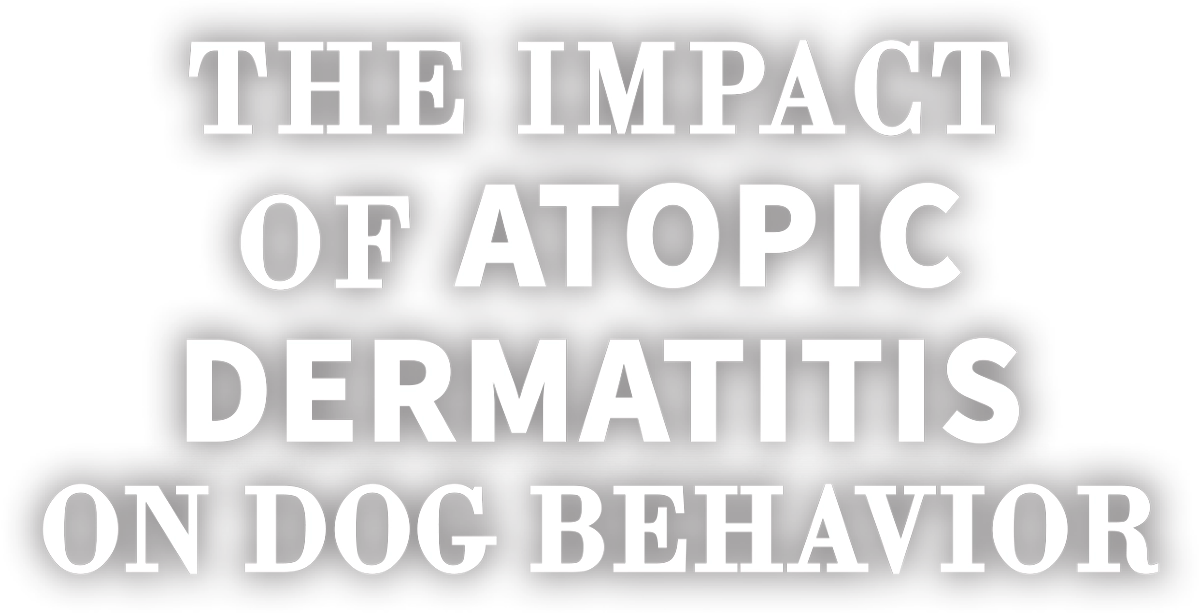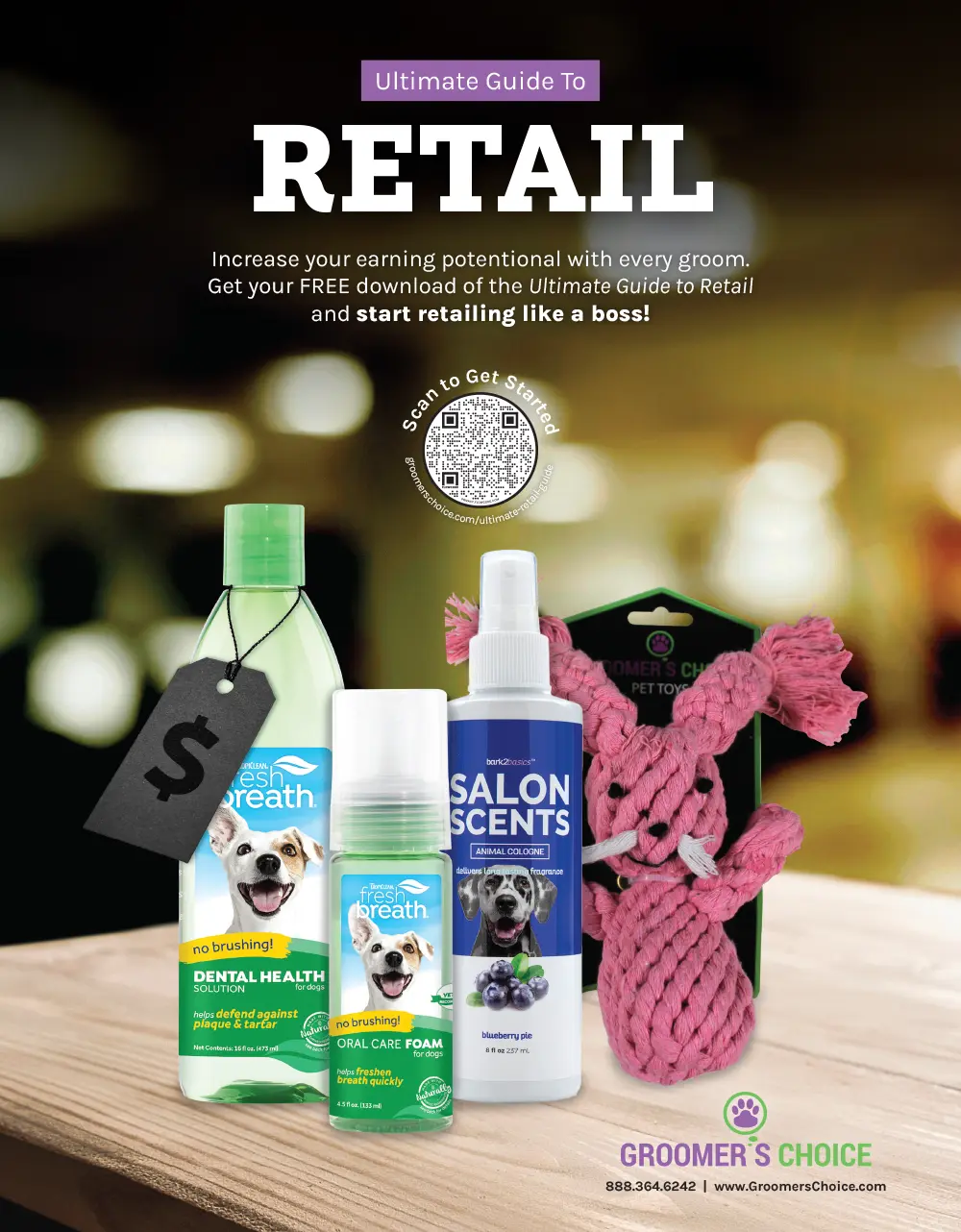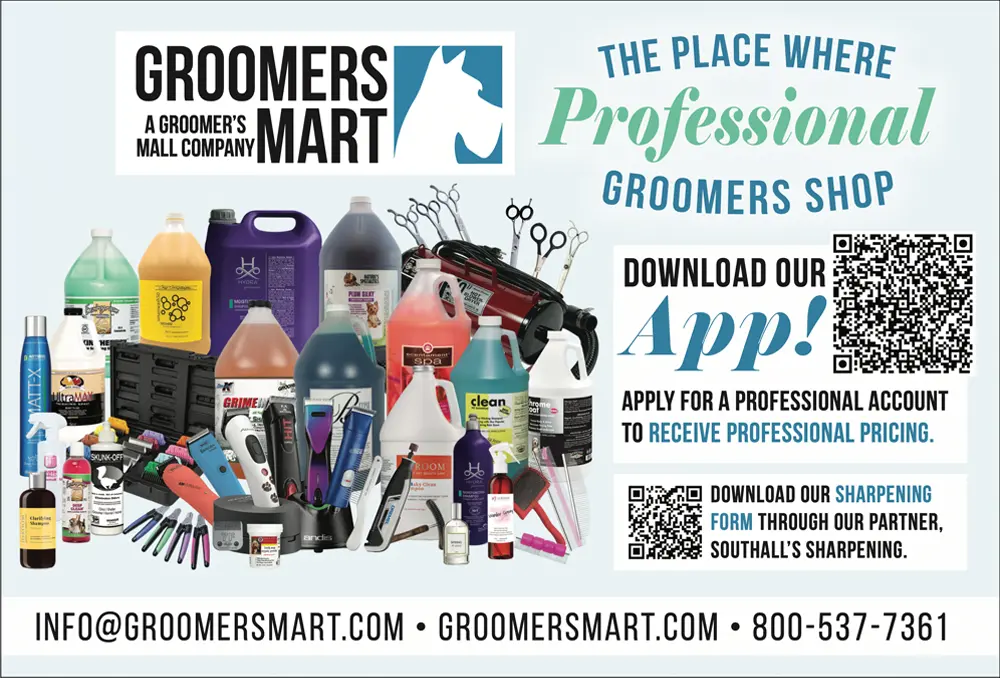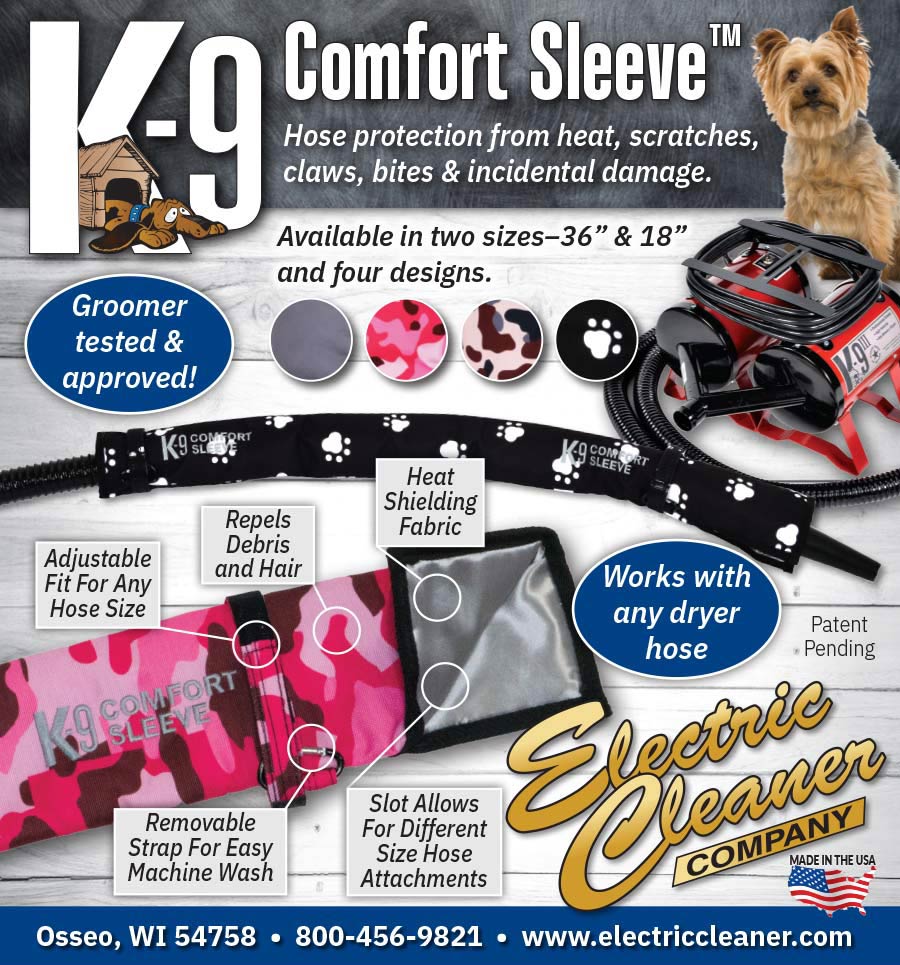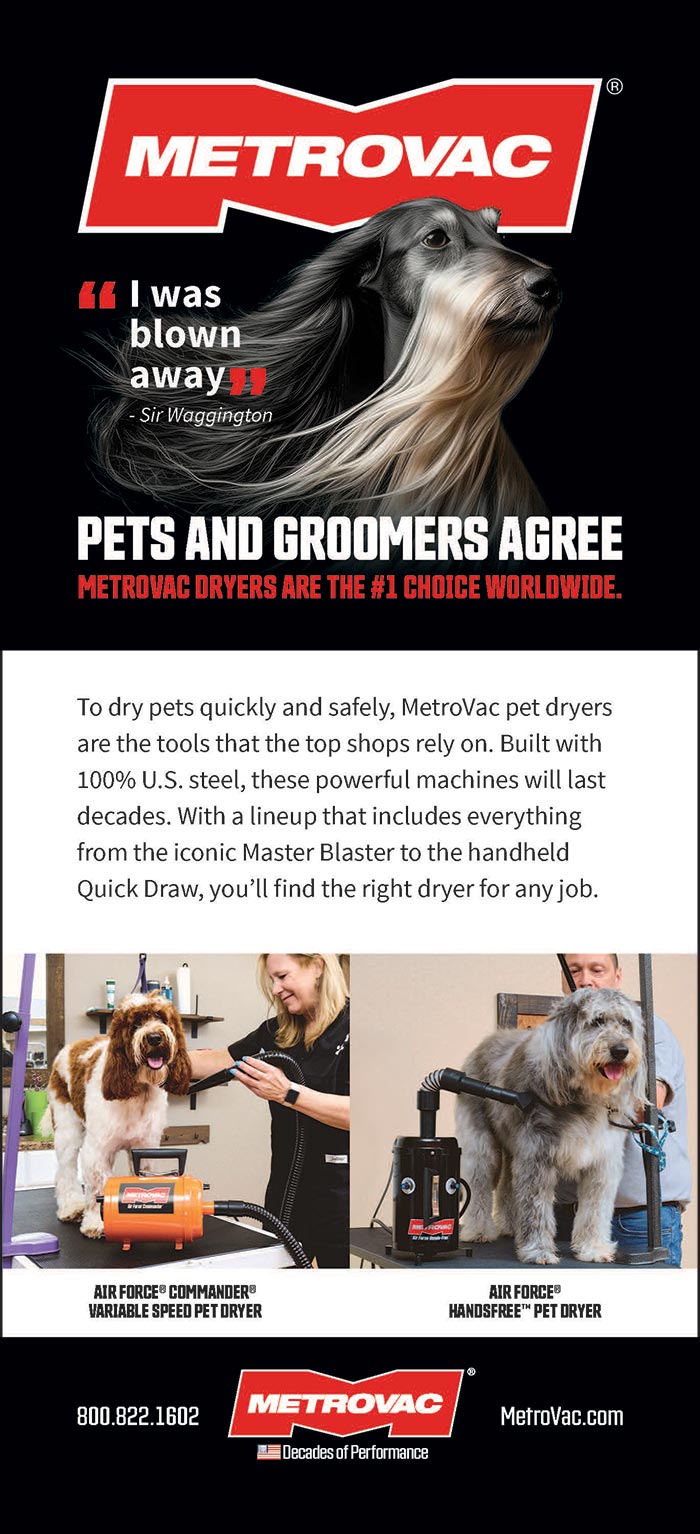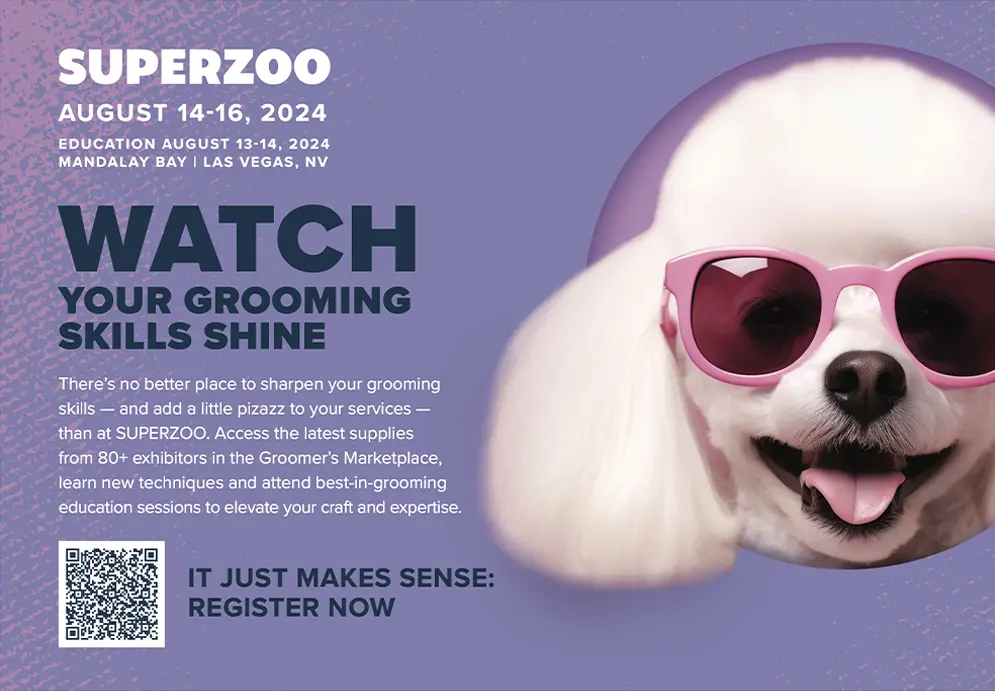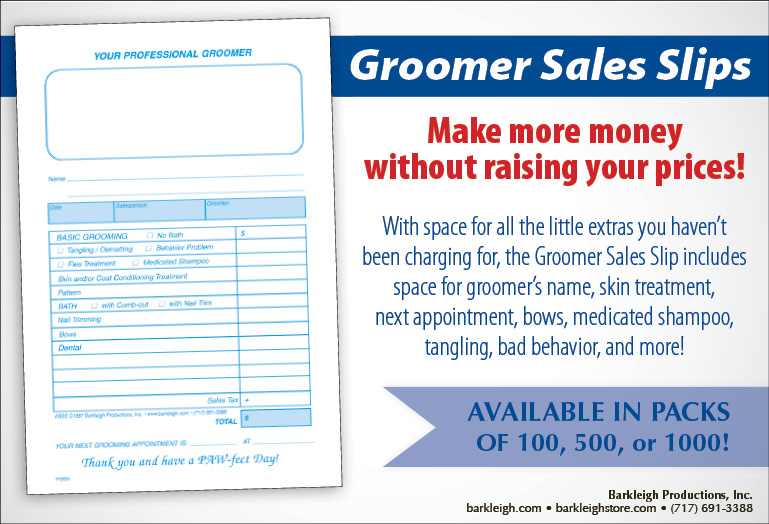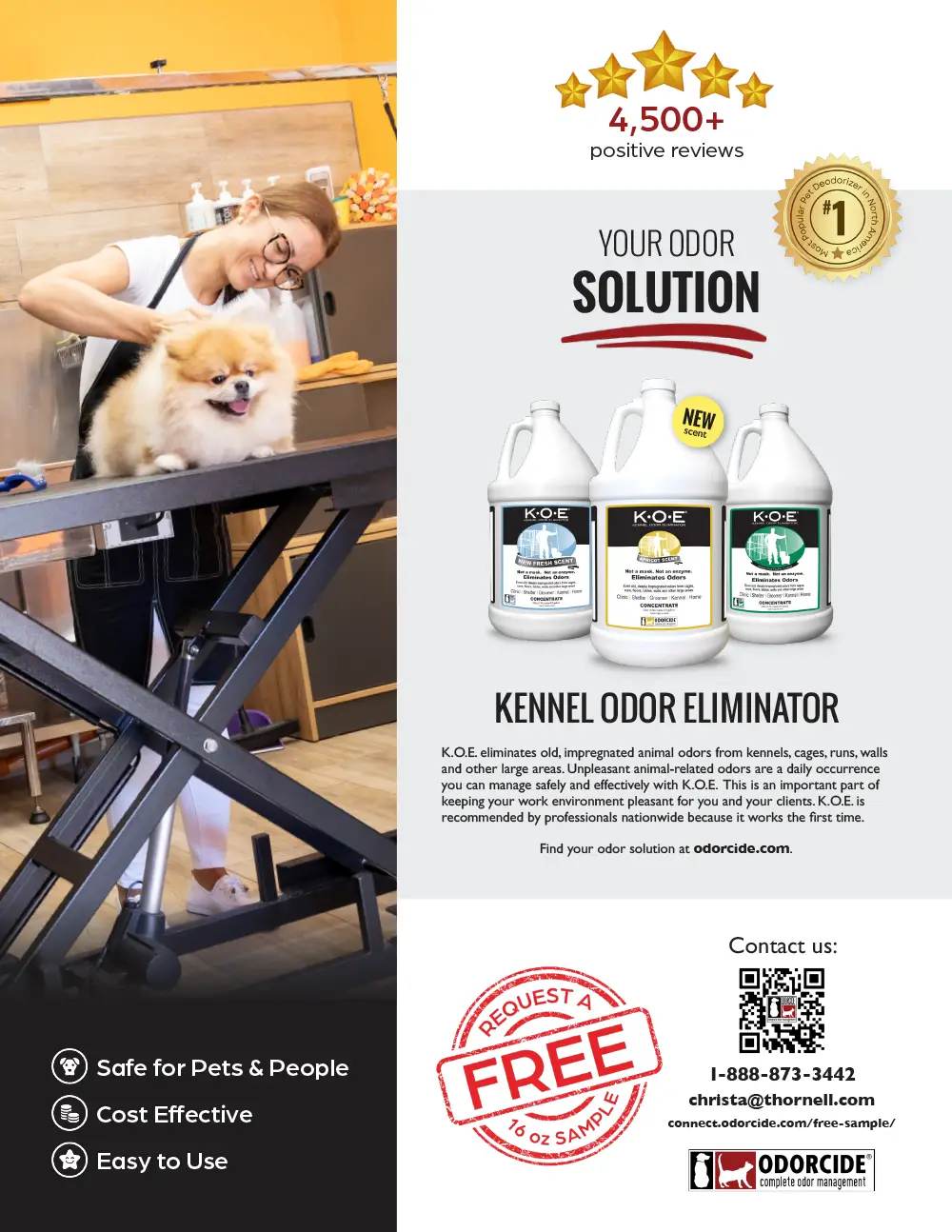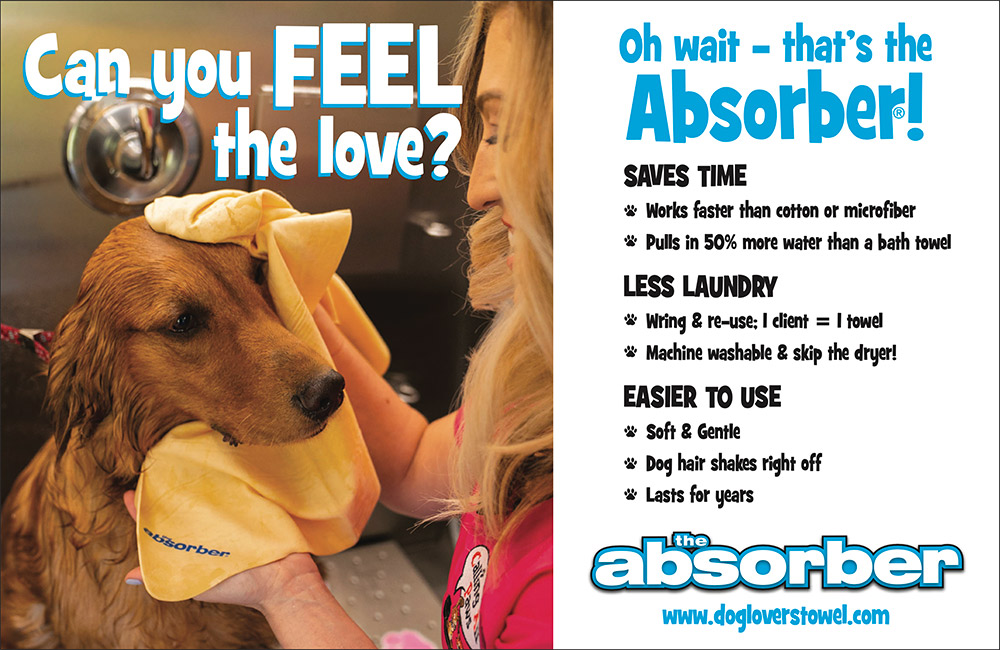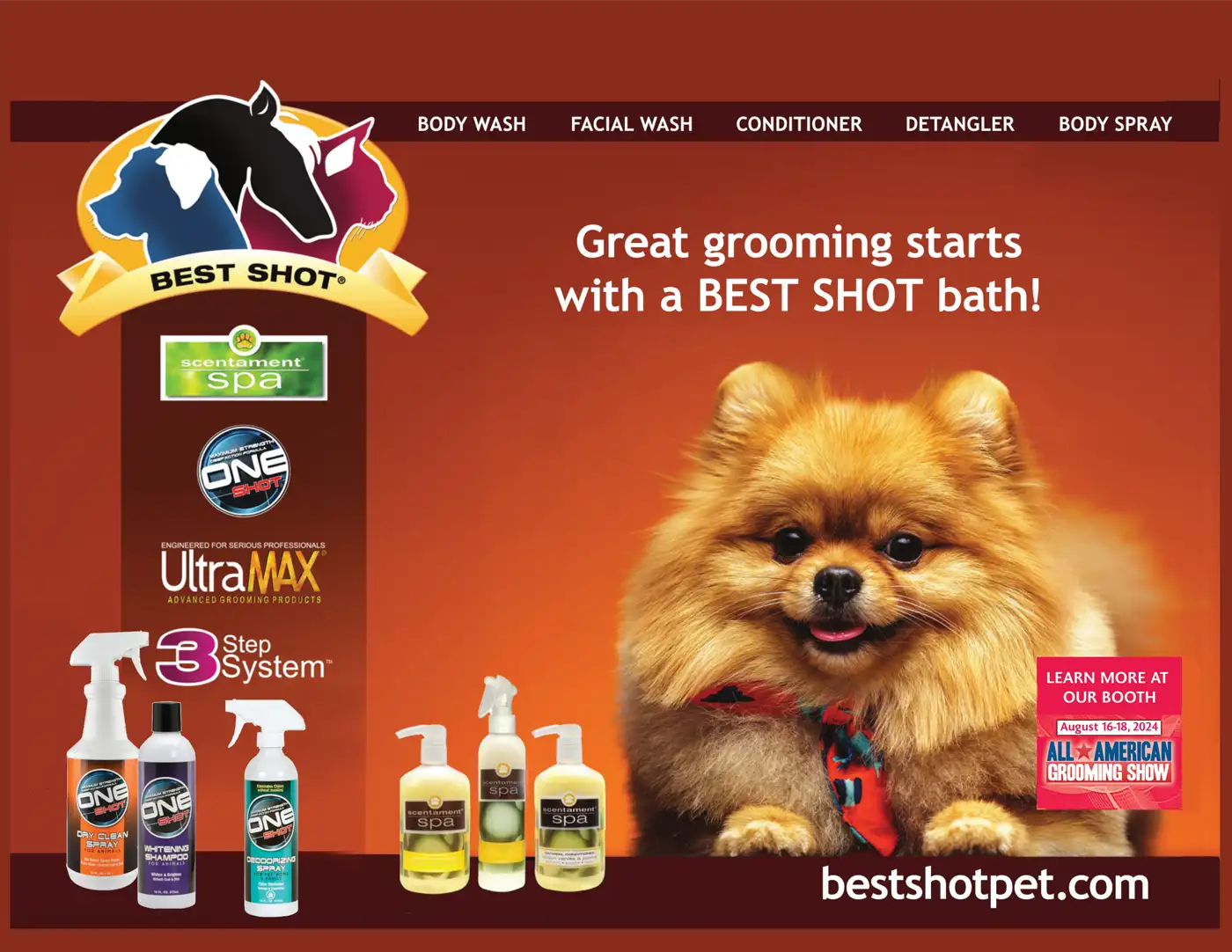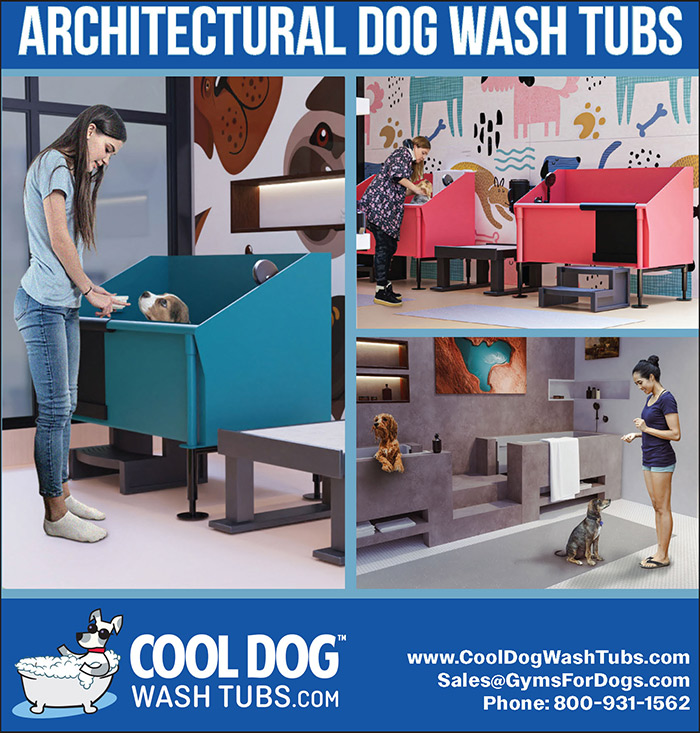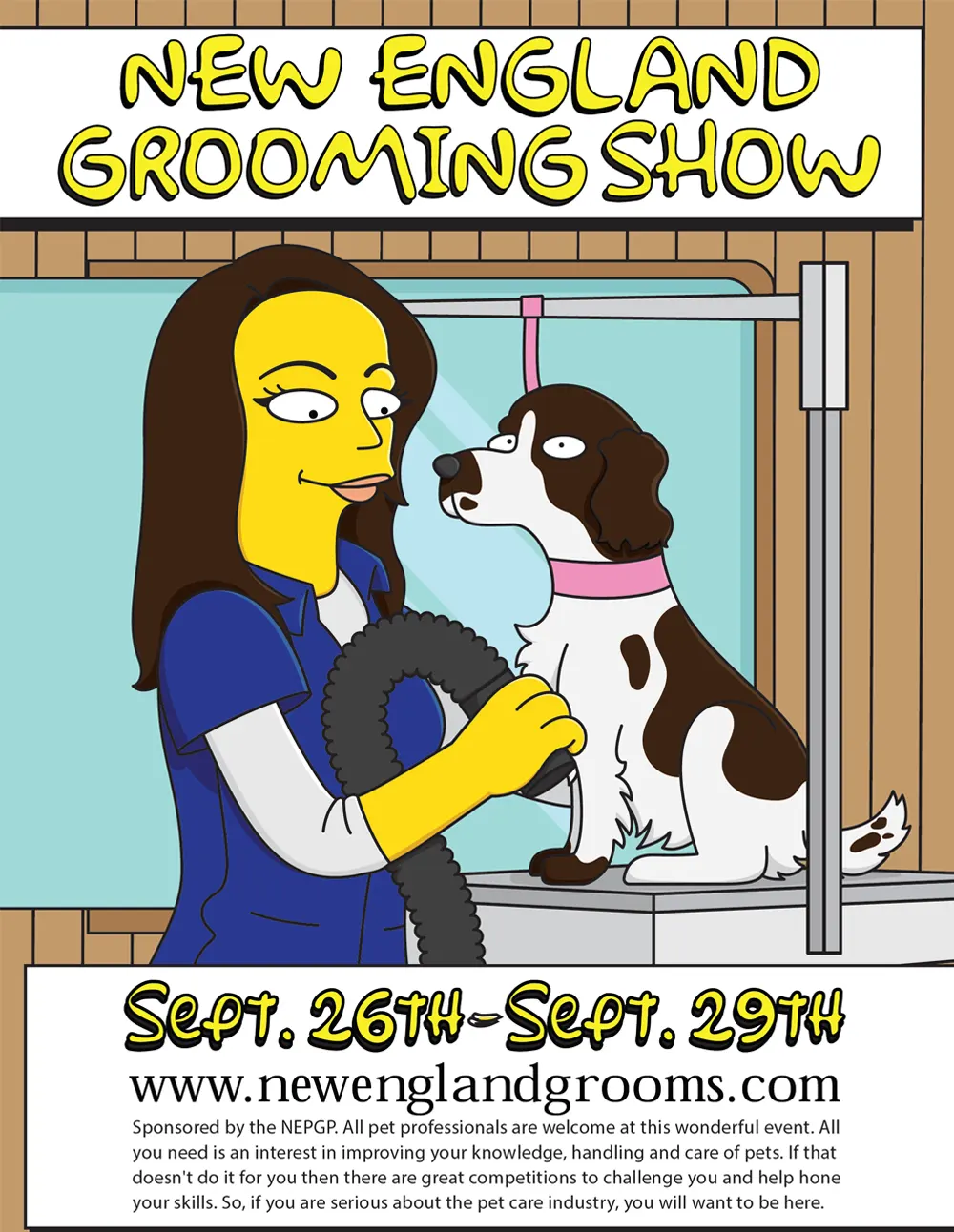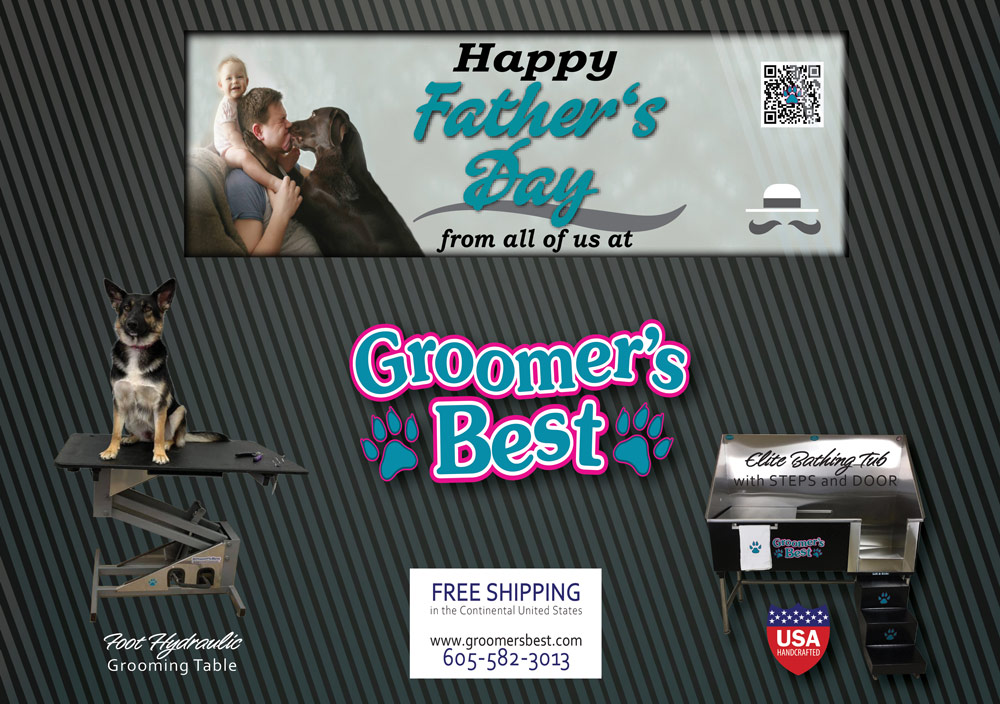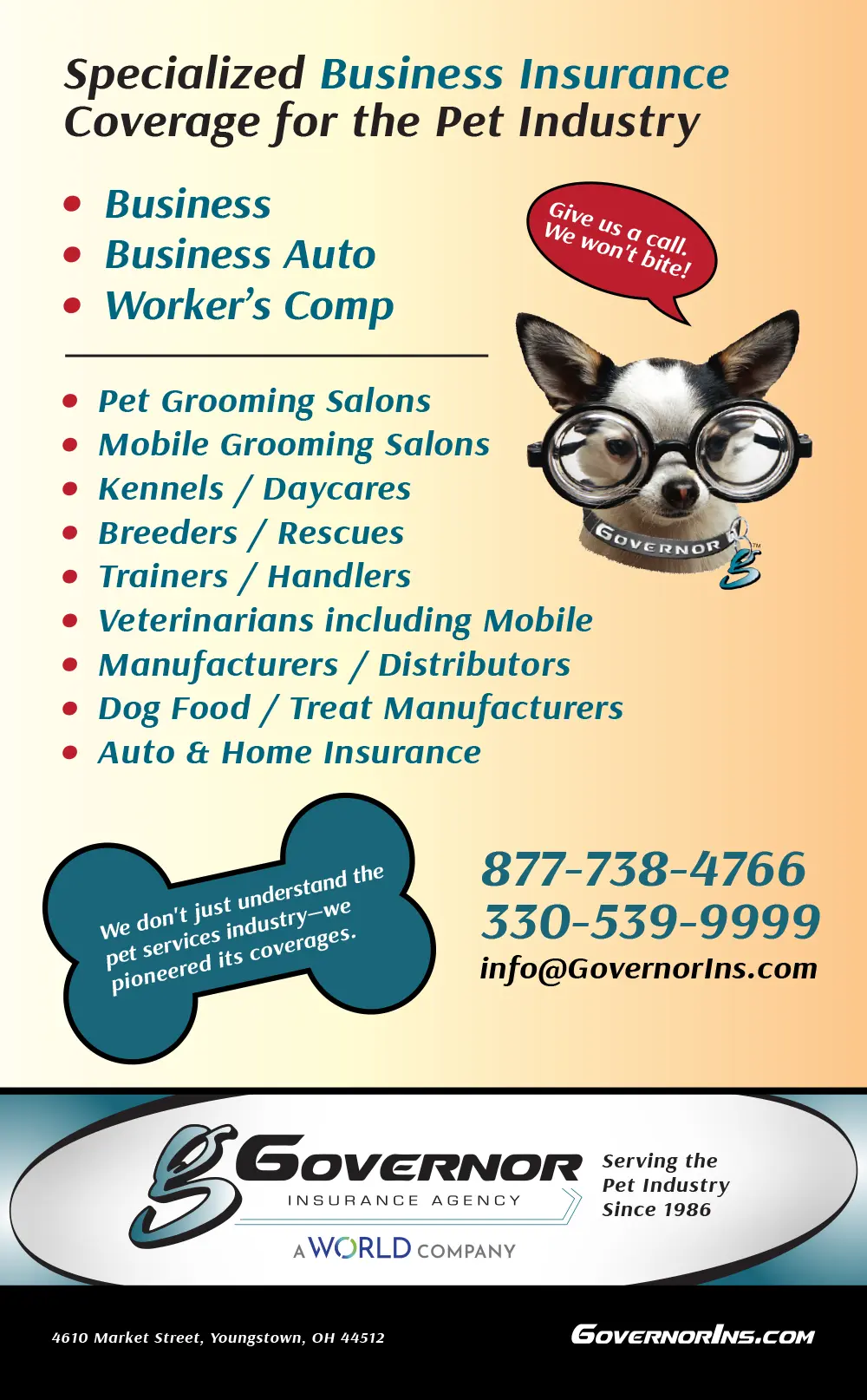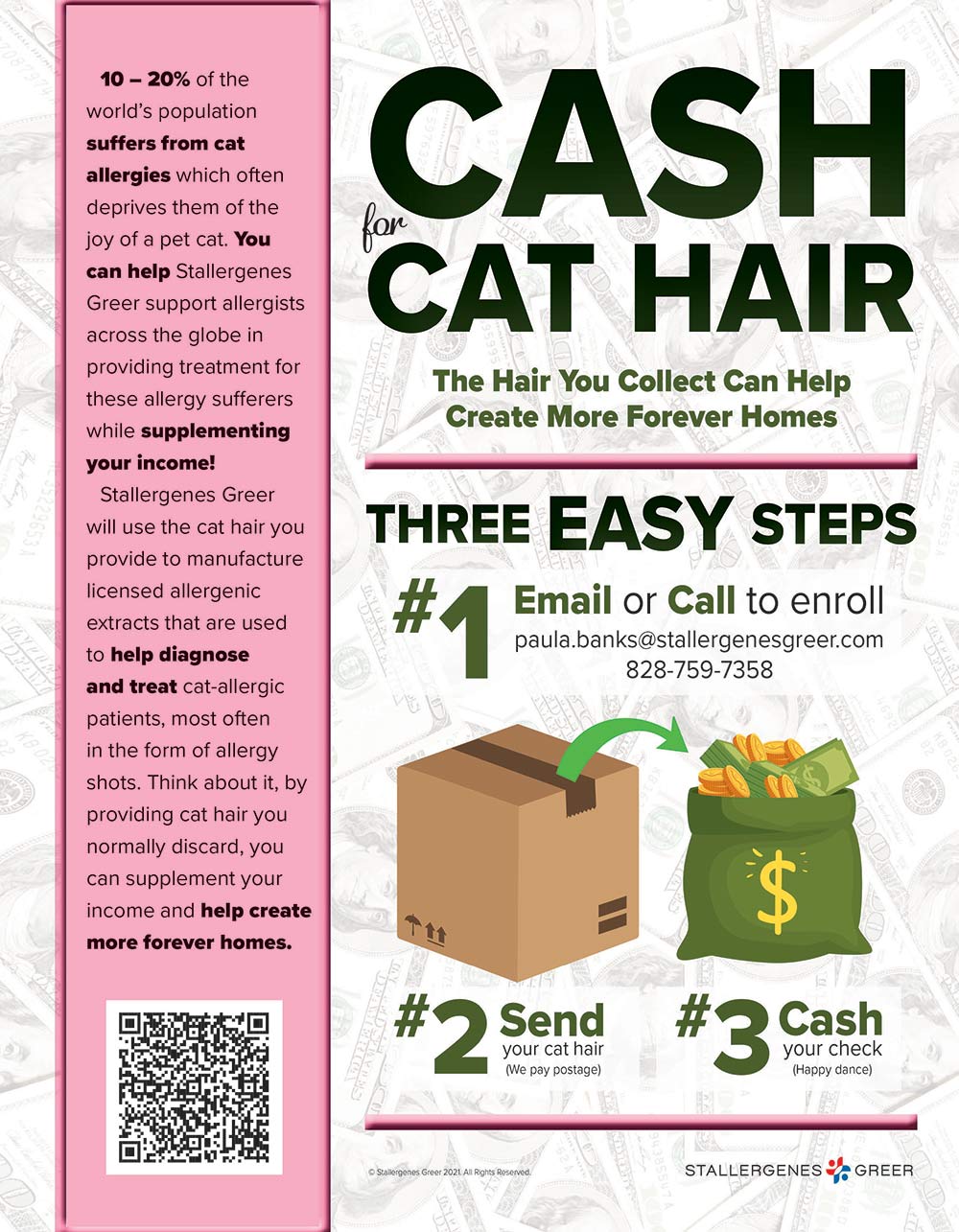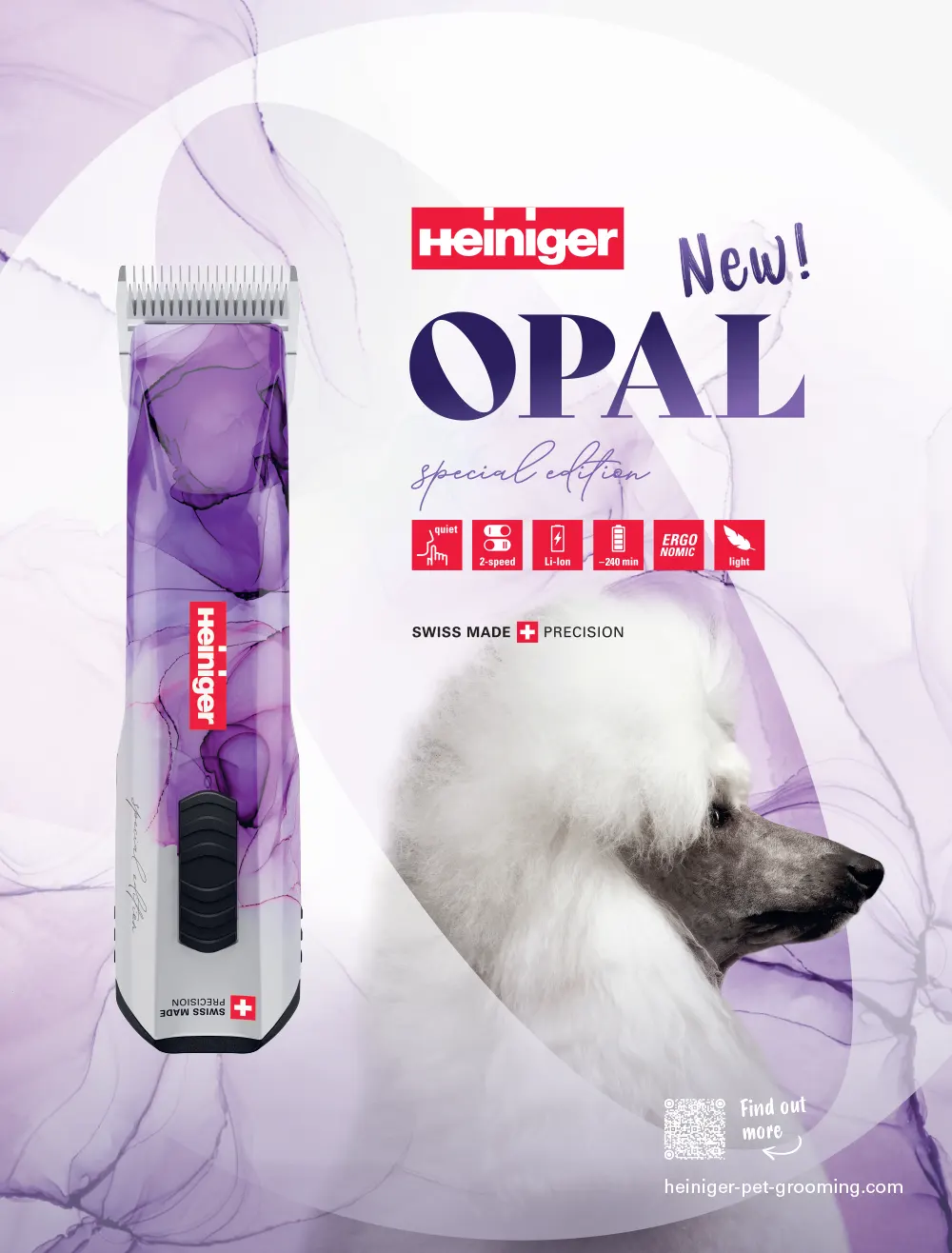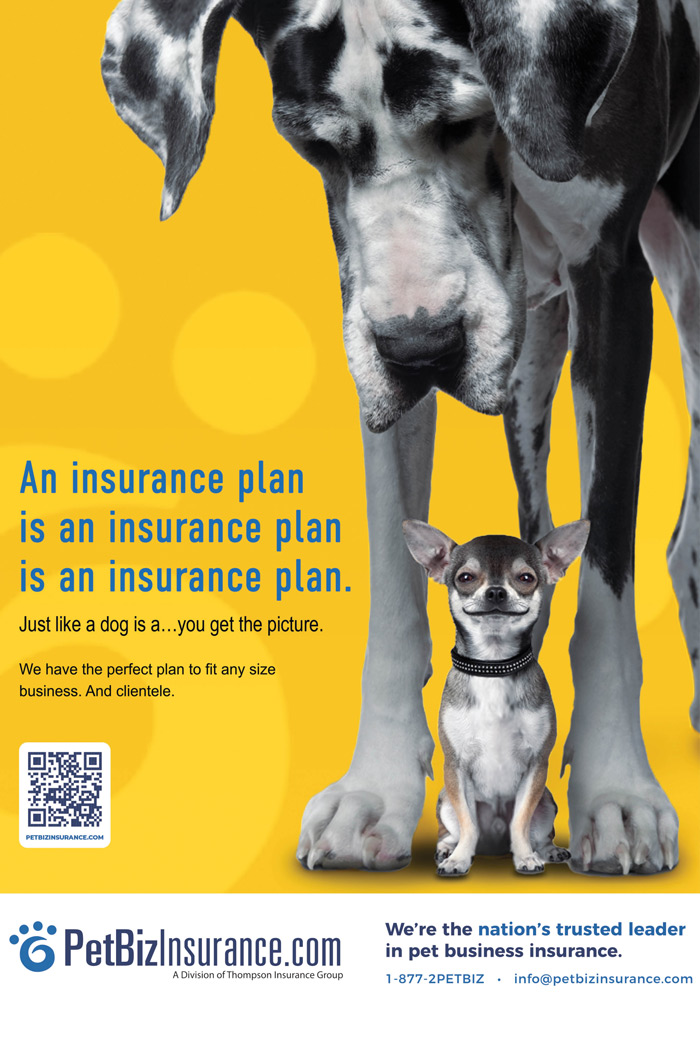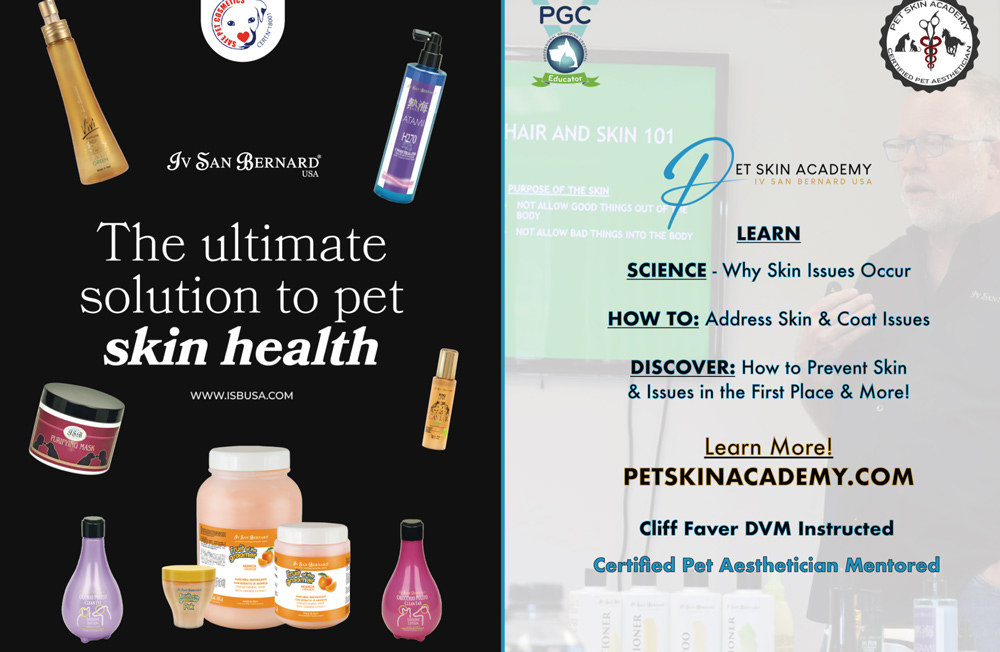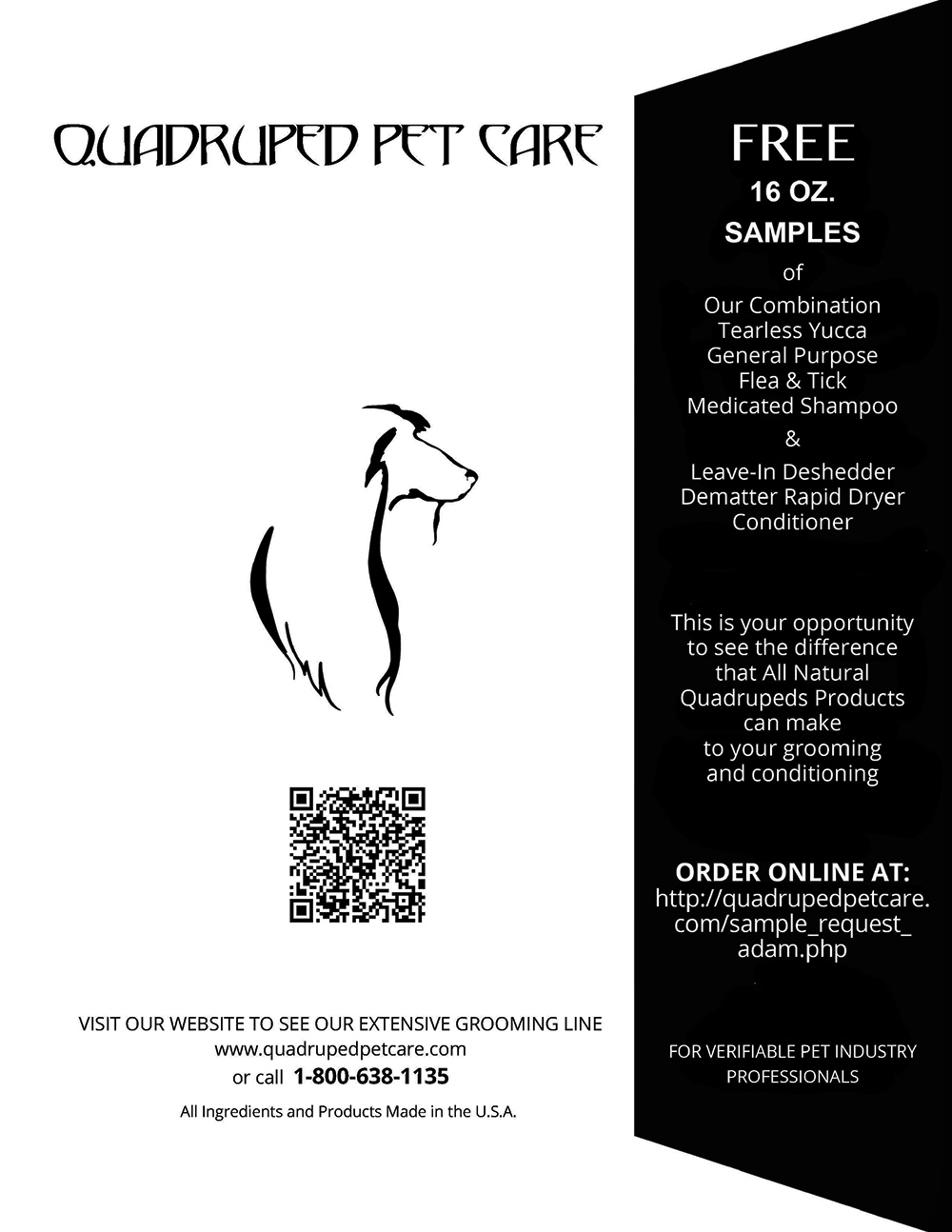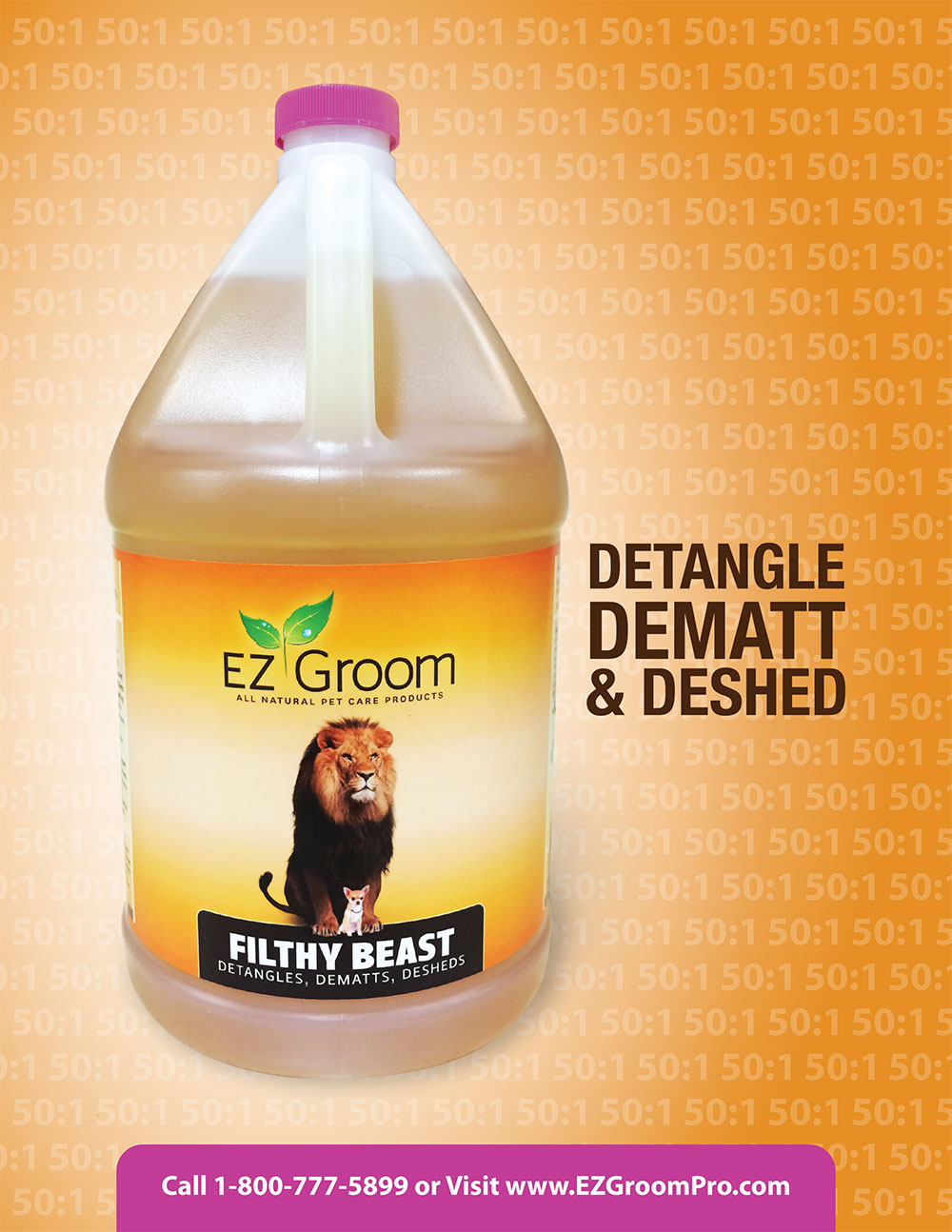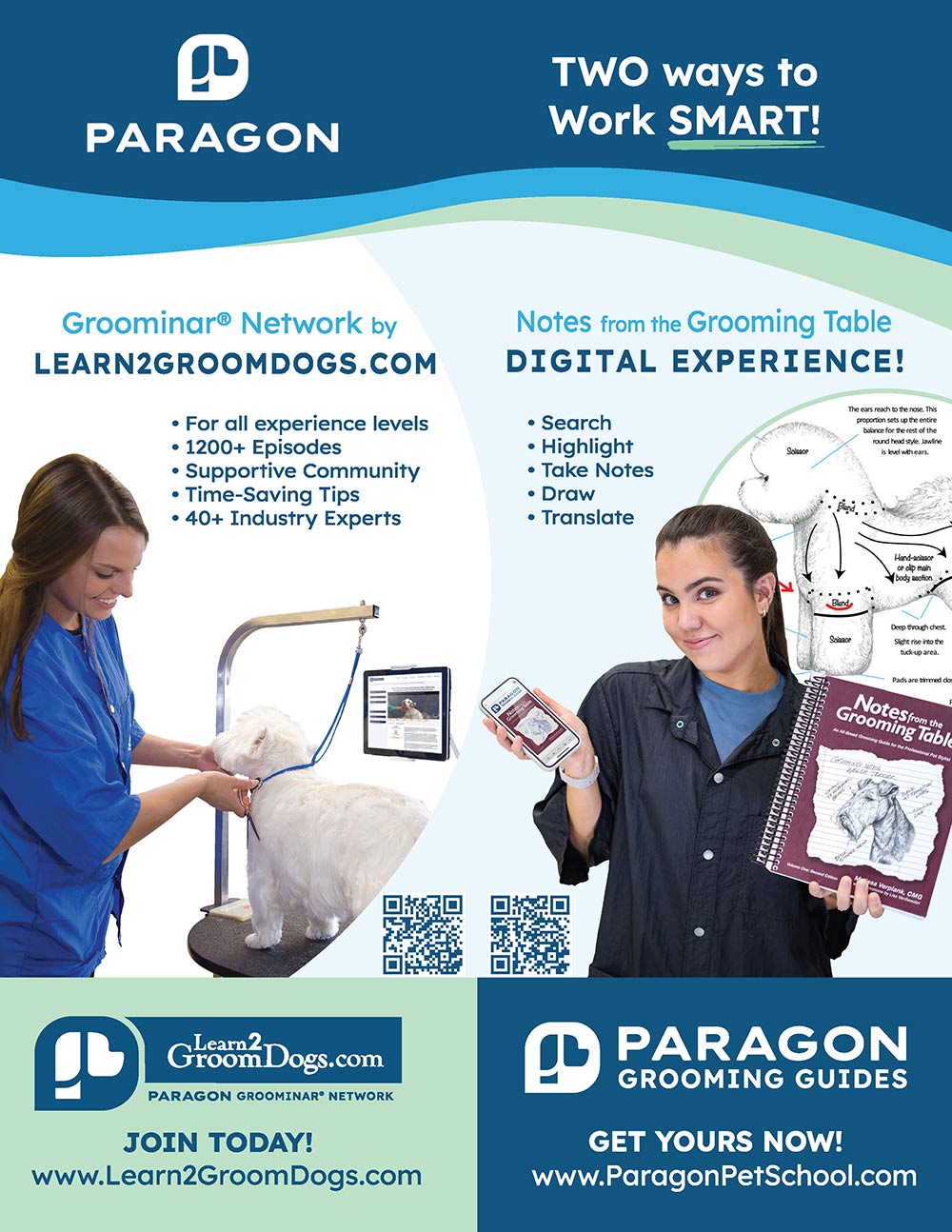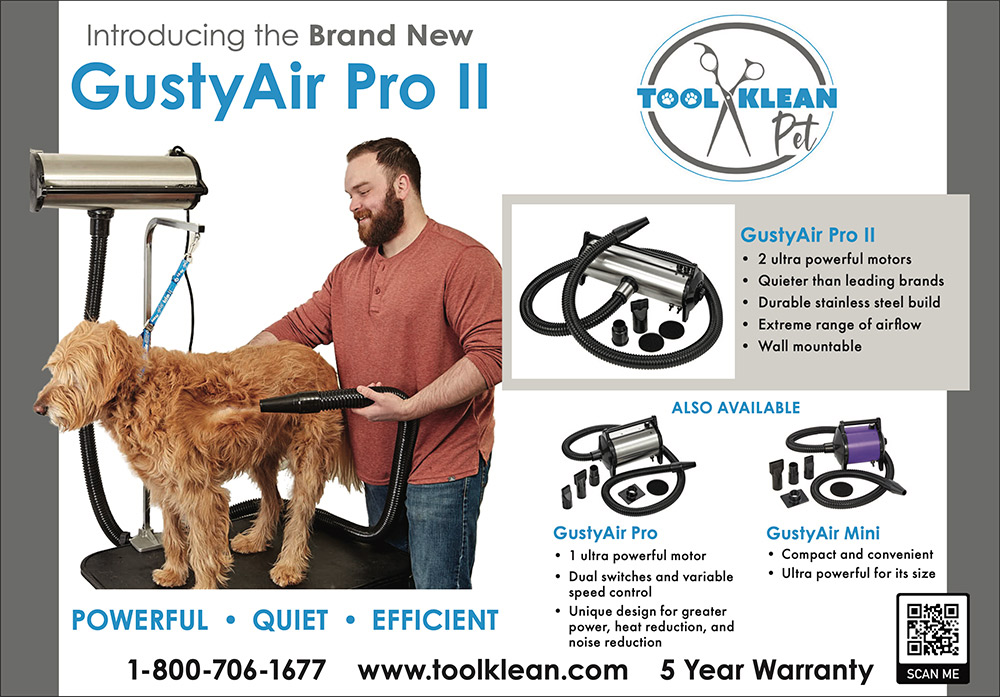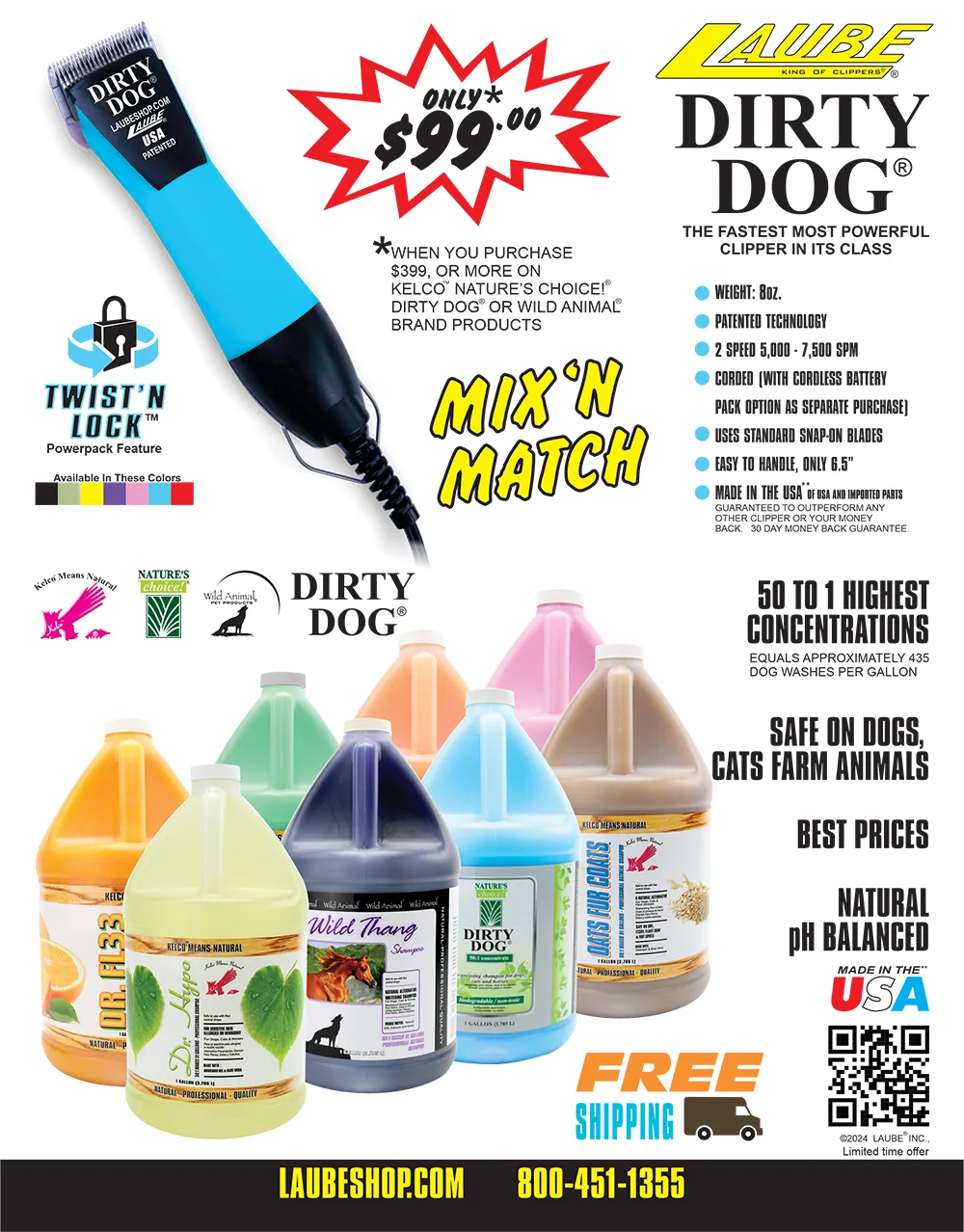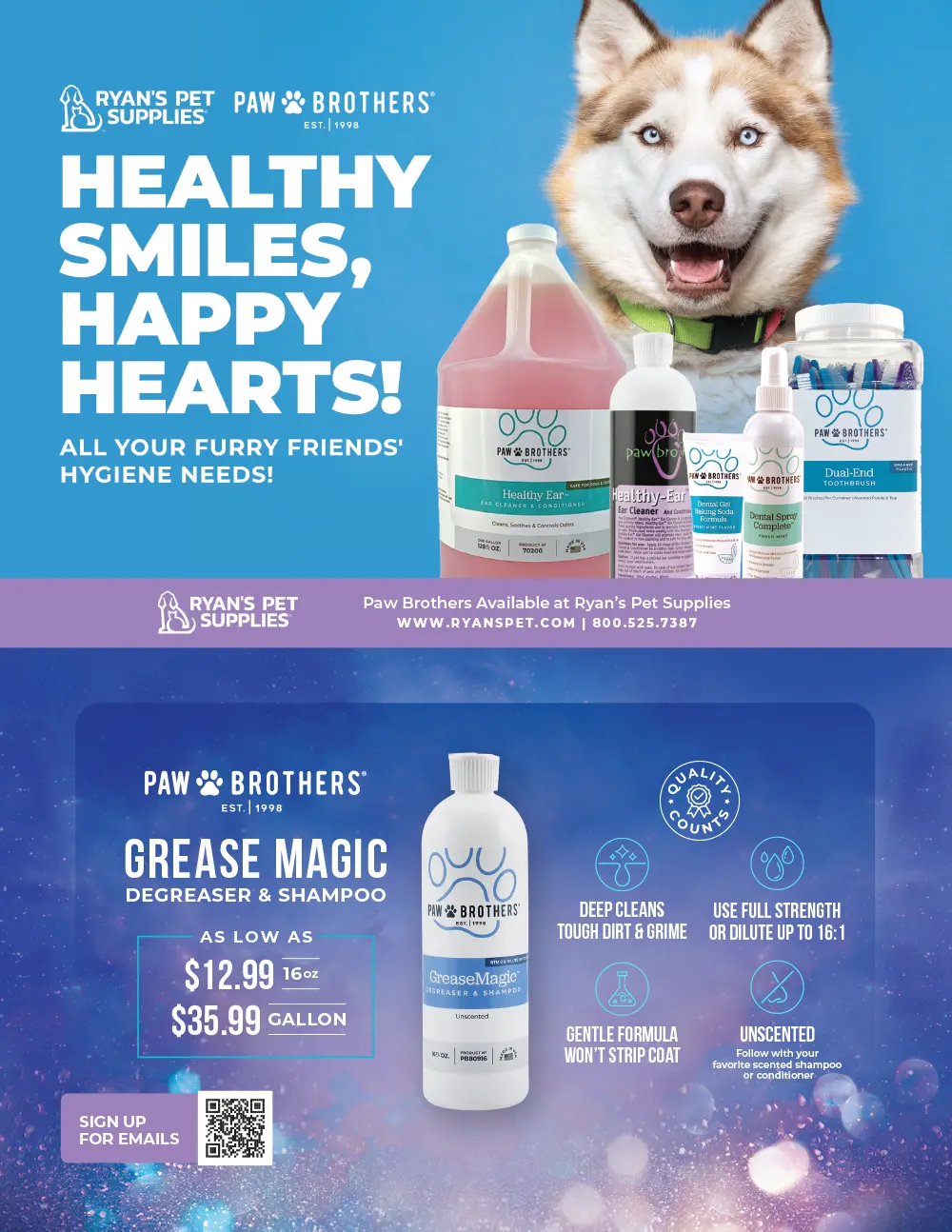Contents | July 2024
14

by Kim Kier
48

by Brittny Knapp
ALSO INSIDE
todd@barkleigh.com
adam@barkleigh.com
gwen@barkleigh.com
rebecca@barkleigh.com
luke@barkleigh.com
laura@barkleigh.com
brandi@barkleigh.com
carlee@barkleigh.com
evan@barkleigh.com
cassidy@barkleigh.com
allison@barkleigh.com
james@barkleigh.com
karin@barkleigh.com
britany@barkleigh.com
Daryl Conner
Lynn Paolillo
Jennifer Bishop Jenkins
ALSO INSIDE
ON THE COVER
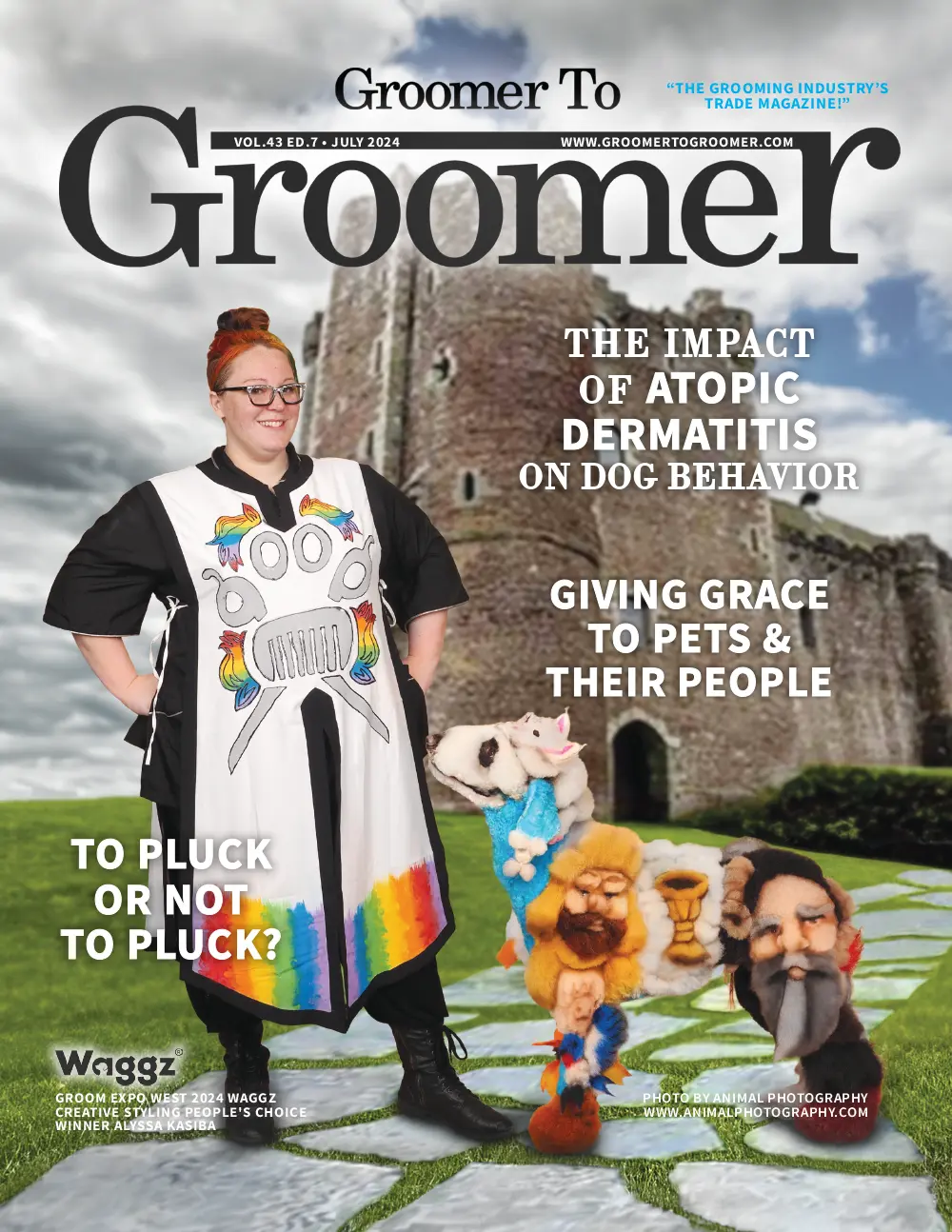
its advertisers for their continued support.
- Animal Photography29
- Bandanas Unlimited25
- Barkleigh Store2
- Barkleigh Store – Groomer Sales Slips21
- Barkleigh Store – The Pet Stylist Playbook60
- Best Shot Pet27
- Cool Dog Wash Tubs30
- Cosmos Bathing Systems57
- Direct Animal Products9
- Double K Industries3
- Electric Cleaner Company12
- Evolution Shears11
- EZ Groom Pro49
- Governor Insurance Agency40
- Groomer’s Best37
- Groomer’s Choice4
- Groomers Mart8
- Heiniger43
- Iv San Bernard | Pet Skin Academy46
- Jodi Murphy31
- Laube63
- Metrovac16
- Midmark22
- New England Grooming Show35
- Odorcide23
- Paragon53
- PetBizInsurance.com45
- PetLift39
- Precision Sharp59
- Puppy Playground42
- Quadruped Pet Care47
- Ryan’s Pet Supplies64
- Ryan’s Pet SuppliesDigital Only
- Stallergenes Greer41
- SUPERZOO17
- The Absorber Dog Lover’s Towel26
- Tool Klean7
- Tool Klean58
- Wag’n Tails13
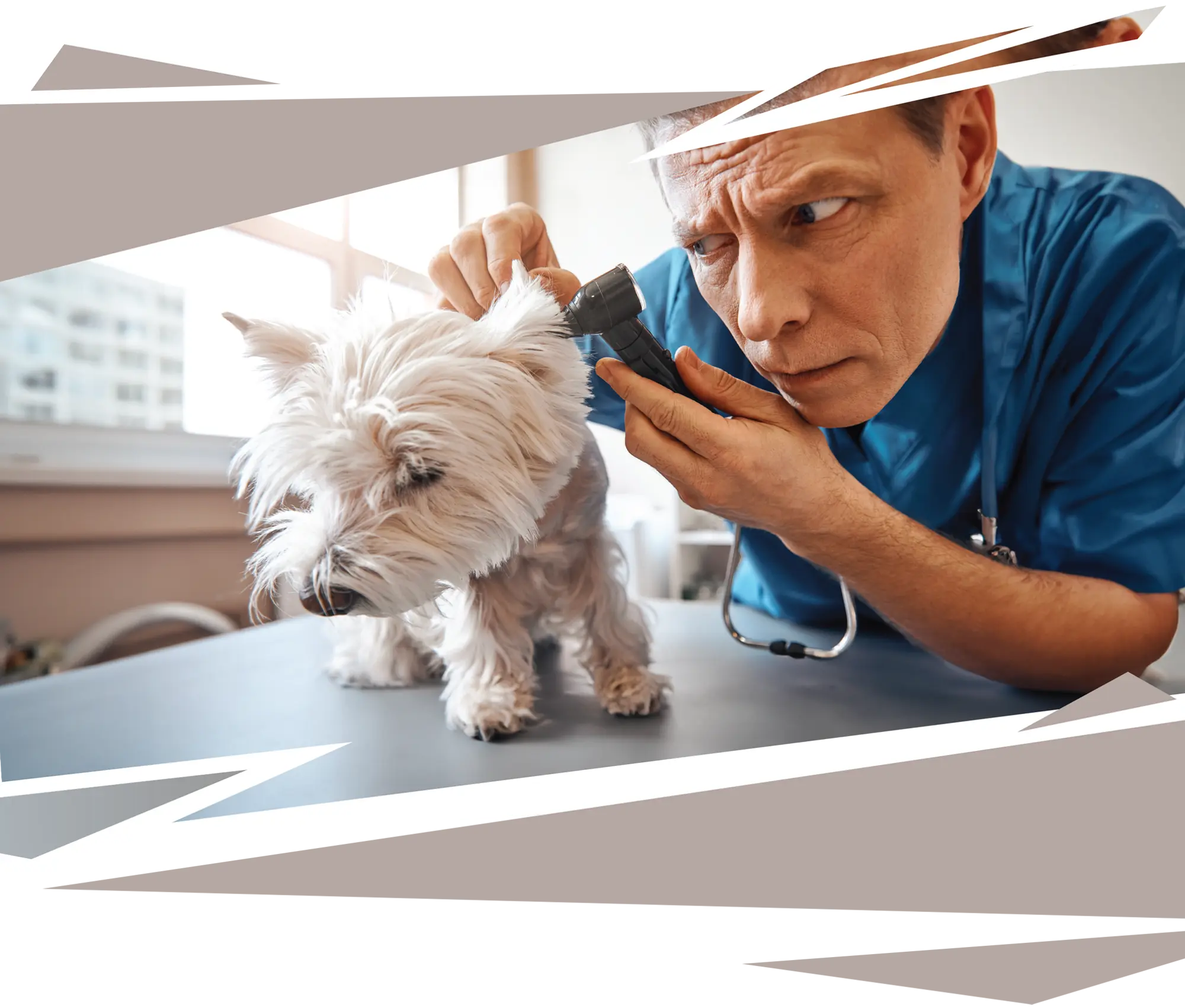

by Dr. Cliff Faver
 ar infections, a prevalent issue in the world of dogs, is a topic of utmost importance. Did you know that 25% of the patients seen in veterinary clinics are for ear infections? Groomers, veterinarians and owners all grapple with them, often leading to hefty bills. But why are they so challenging to deal with?
ar infections, a prevalent issue in the world of dogs, is a topic of utmost importance. Did you know that 25% of the patients seen in veterinary clinics are for ear infections? Groomers, veterinarians and owners all grapple with them, often leading to hefty bills. But why are they so challenging to deal with?
The first hurdle we face is the unique structure of a dog’s ear. It’s like a funnel that collects dirt, debris and water, and then it takes a 90-degree turn before going deep into a bony cave. This makes it incredibly hard to reach the source of the problem if foreign material or infection gets down in the canal. The dog’s only defense is to shake their head vigorously, hoping to dislodge the issue. However, this method is often ineffective and can lead to more serious problems like a hematoma of the ear.
The purpose of the hair is to block debris from getting into the ear, but it can also block things from getting out of the ear, setting the dog up for ear infections. This creates one of the most controversial subjects we deal with in grooming—to pluck or not to pluck.
The hair serves the purpose of filtering things out, so if we remove it all, then we destroy that function. Some dogs will have nasty infections if we leave it all, so it makes sense to meet halfway in the middle. We must remove some of the hair but leave enough to maintain the filtration system.
The next concern is how you remove it and who should remove it. I recommend plucking the hairs from the inside of the ear (shallow root system) to a level that re-establishes a healthy filtration system. I DO NOT recommend using the old “grab as much hair and twist with the hemostat” method. It is very painful, and often, the person can’t see the tip of the hemostats; unbeknownst to them, they frequently pinch the tissue with the tips and cause damage to the ear canal that they can’t even see.
As a routine practice, I would teach owners when they brought in puppies of breeds prone to ear issues how to pluck and encouraged them to pluck a few hairs regularly so they never would be allowed to overgrow. This also serves as a training purpose of having the dog get used to the procedure.
In addition to hair, there are many other sources of problems that can plague the ear. Most of the time, when discussing ears, we jump to ear infections as the problem. In reality, ear infections are often secondary to other issues that may or may not be obvious. It is a consensus that food and inhalant allergies will irritate the ear, leading to secondary bacterial or yeast infections.
When discussing ear issues, it is essential to consider that the ear is an extension of the skin and is very sebaceous. So, anything that will cause problems on the skin can cause issues in the ear, such as trauma, harsh products (like alcohol and detergents), parasites, foreign bodies, hormonal issues, etc.
Foreign bodies are a common problem for veterinarians. Foxtails or grass awns are probably the most common in my practice. These are barbed, and once they start down an ear canal, they don’t back out and are not easily dislodged by a dog shaking its head. They often progress to the point where they puncture the eardrum, leading to an infection of the middle ear.
Ticks and mites are also common inhabitants of the ears. Most people have heard of or seen mites in pets’ ears but are not as familiar with ticks deep in the ear canals. A specific type of tick that is actually common in cattle can and will inhabit the ear of the dog. On one occasion, I removed 14 of these ticks from one dog’s ear, all the size of a raisin.
As groomers you will get the opportunity to see many of these conditions, most of which are not advised that you treat or recommend any medication for, because without being able to observe the eardrum, you cannot determine the safety of a product relative to if it might enter the middle ear. Ear plucking, on the other hand (as long as you are just using your fingers), is in the realm of routine care and can and should be done as a groomer as long as there is no infection…in this veterinarian’s opinion.
Dr. Cliff Faver graduated with a BS in Biology/BA in Chemistry before getting a Veterinary degree in 1987. He is the past owner of Animal Health Services in Cave Creek, Arizona and now the US distributor for Iv San Bernard products, teaches the ISB Pet Aesthetician Certification program, and speaks internationally on hair and skin. His passion is to merge groomers and veterinarians to aid in helping and healing pets. He is also a member of AVMA, AAHA, AZVMA, Board member with Burbank Kennel Club, and has served on Novartis Lead Committee, Hill’s International Global Veterinary Board, and a Veterinary Management Group.



 hat is wrong with you today?” I asked the black miniature Schnauzer on my table. She’s a regular visitor every six weeks and generally a dream to work on. On this day, she danced and spun, whined and pulled, causing me to dip deep into my well of patience.
hat is wrong with you today?” I asked the black miniature Schnauzer on my table. She’s a regular visitor every six weeks and generally a dream to work on. On this day, she danced and spun, whined and pulled, causing me to dip deep into my well of patience.
Since she wouldn’t answer me, I had to do some pondering. It occurred to me that her owners had recently split up and the little dog was being shuffled between homes weekly. In addition, one of her owners was dealing with a significant health issue that limited his mobility dramatically. Her life had changed considerably in the past few months; was it any wonder that she was behaving differently?
While I groomed her, I thought back to other pets who had changed their behavior during the grooming process. One was a large mixed breed who had always been a perfect gentleman on spa day. Suddenly, he became restless, sometimes almost frantic, and would even snap at me, which was a total surprise given our long history of peaceful visits. When I spoke with the owner, she explained that her husband had been diagnosed with a terminal illness. It seemed the dog was desperate to be with his suffering owner, and going to be groomed made him terribly anxious. When his beloved human finally passed, the dog resumed his original sterling behavior.



In online grooming forums, the frustration groomers feel toward the pet-owning public is a common discussion point—often for valid reasons. We put up with last-minute cancellations and no-shows that negatively affect our income. We encounter people that do not respect the complexity and challenges of our work. We are confronted with those who neglect their dog’s care and then become upset with us when we cannot miraculously undo months of indifference and make mats disappear. From almost comical instances, like when someone schedules a small, short-haired pet but shows up with a large, long-haired creature—oblivious to the difference—to serious events, like when someone tries to steal our services or berates us for the price we charge, dealing with people can be trying.


- Don’t automatically assume the worst in others. Realize that the grumpy, impatient person you are dealing with may be going through struggles that you know nothing about.
- Think before you react. Before you say that snippy remark or before you respond tersely to that text or email, think about it first. Avoid speaking or writing things you may later regret. If you lie awake at night wishing you had not said a certain thing, you are robbing yourself of peace. Keep your responses professional, you will never regret that.
- Let things go. The old expression, “Like water off a duck’s back,” suggests letting annoyances roll past. By letting irritations go, your daily interactions become less stressful. Sometimes, you can even find humor in a tense situation, and that is always a win because laughing is such a gift.
- Don’t expect the grace you offer to be recognized or reciprocated. Giving grace is an act of compassion that will usually go unrecognized and not often reciprocated when you’re the one having a bad day.
Giving grace does not mean allowing others to take advantage of or abuse us. It merely means that in situations where we can forgive others for their shortcomings and move on with our day, focusing on the good it entails can benefit our own mental health and wellbeing.
We should also consider giving ourselves a little grace. Don’t be too harsh on yourself if you slip up, make a mistake or forget something you promised to do. Let it go, resolve to do better next time and move ahead.
From dogs to their owners, situations will try our patience, heap frustration upon us and make us question our life choices. Deciding to be compassionate to the pets, their people, and ourselves will help make our days go more smoothly and enjoyably.

by Kim Kier
Photos Provided by Kim Kier
![]() t’s no secret that dogs can sometimes exhibit behavior that is less than desirable. From chewing on furniture to hyperactivity, these actions can often leave pet owners frustrated and at a loss for how to address the problem. However, what if I told you that there might be a direct connection between a dog’s behavior and a skin condition causing them discomfort?
t’s no secret that dogs can sometimes exhibit behavior that is less than desirable. From chewing on furniture to hyperactivity, these actions can often leave pet owners frustrated and at a loss for how to address the problem. However, what if I told you that there might be a direct connection between a dog’s behavior and a skin condition causing them discomfort?
Psychological Impact on Dogs and Owners
Dr. Naomi Harvey, the lead researcher of the study, emphasized the importance of recognizing that a dog’s behavioral problems may be a result of itching rather than inherent traits. By addressing the underlying cause of the itching, pet owners can potentially improve their relationship with their dog and provide them with a better quality of life.
As groomers, we play a vital role in assisting dogs with atopic dermatitis. While we are not qualified to diagnose the condition, we can help treat its symptoms and alleviate some of the discomfort experienced by these dogs. By focusing on relieving itching, redness and dryness, we can provide temporary relief and improve their overall wellbeing.

Restoring the Skin Barrier
According to animal dermatologists, ceramides, along with fatty acids, help control water loss in the epidermis. By utilizing ceramide-based products, groomers can aid in improving the skin barrier’s health and reducing the severity of itching experienced by dogs with atopic dermatitis.
By recognizing the impact of the condition on a dog’s mental wellbeing, as groomers, we can take steps to alleviate their discomfort and improve their overall quality of life by providing relief through symptom management and collaboration with veterinarians for comprehensive care.
The research conducted in this study has shed light on the connection between itching severity and problematic behavior in dogs with atopic dermatitis. By recognizing the impact of the condition on a dog’s mental wellbeing, as groomers, we can take steps to alleviate their discomfort and improve their overall quality of life by providing relief through symptom management and collaboration with veterinarians for comprehensive care. Together we can make a difference in the lives of dogs suffering from atopic dermatitis and strengthen the bond between humans and their furry companions.
- The Itchy Dog Project. School of Veterinary Medicine and Science University of Nottingham. https://www.nottingham.ac.uk/research/groups/itchy-dog/
Kim Kier is the owner/groomer of Little Barks Grooming & Boutique, an award-winning luxury salon in Columbia, South Carolina. She is also a Master Pet Aesthetician, Professional Grooming Credential (World Pet Association), Master Groomer Behavior Specialist, Fear Free Certified Professional , Low Stress Handling Certified Level Silver Certified, and Certified Puppy Consultant. Kim has recently been honored to be named “Grooming Guru” by Pet Product News International for 2023.

– Teri DiMarino
 athy Rose didn’t set out to change the grooming industry, but she left her indelible mark wherever she went. Throughout her career, whenever she saw something that needed done, she would accept the challenge, saying, “I have work to do.” She took on those tasks joyfully and did not stop until she was satisfied she had done her best.
athy Rose didn’t set out to change the grooming industry, but she left her indelible mark wherever she went. Throughout her career, whenever she saw something that needed done, she would accept the challenge, saying, “I have work to do.” She took on those tasks joyfully and did not stop until she was satisfied she had done her best.
With a voracious appetite for learning and mostly self-taught, Kathy became certified by the NDGAA and ISCC, and also achieved her entire International Professional Groomers Master Certification in one weekend. And, just 18 months into her grooming career, she became a business owner when she purchased her salon, Pets of Perfection, in Boynton Beach, Florida.
Kathy did a lot of specialty grooming in her salon and was one of the pioneers in the creative grooming arena. In the beginning, creative was not so much the intense, bold colors we see today, but intricate coat carvings—a skill that came naturally to Kathy.

Back row, left to right: Kathy Rose, Maureen Parolini, Liz Paul, Lynn Carver. Bottom row, left to right: Lynda Cottrell, Melissa Verplank.
It wasn’t only the grooming competitions that she loved; Kathy also loved the groomers. Helping them attain their best was of the utmost importance to her, and she would take the time to answer questions and help anyone who asked her.

“As my skills increased, I entered a competition,” Tammy continues. “Kathy was a judge and was the ring coordinator for Barkleigh. She was always smiling and encouraging. Years later, I was the secretary for GroomTeam USA and Kathy became a board member. Kat and I really became close and got to know each other on a personal level. We spent time judging together in Brazil. For me it was yet another learning opportunity; getting to judge with someone who had so much experience.
“Our friendship of more than 30 years started with Kathy’s friendly ‘Hi’ to me at Intergroom,” Tammy adds. “She gave me inspiration early on in my career, then became my judge, mentor, and someone I looked up to. Then it went full circle when I had the joy and privilege of working with her at industry events.”
Kathy Rose gave of her time and talents unselfishly. When she took on a project, she worked tirelessly to see it through. One monumental undertaking was when Kathy helped to iron out the protocol and formalities of the contest ring to bring consistency and standardize the contest rules. She looked at and studied all sides of the rules—weighing the good and the bad of each. In the end, Kathy led the way to creating consistent rules for grooming competitions at the shows throughout America, which provided competitors the peace of mind knowing that the rules would be the same at every show. However, getting all of the show promoters to accept and implement the standardized rules didn’t happen overnight. There was a lot of behind-the-scenes work that had to be done.

Kathy was a sought after-speaker, sharing her knowledge at countless industry events, and was a columnist for Groomer To Groomer magazine. Among her many articles were tutorials on how to groom everyday “Bread and Butter” dogs with style. In addition to speaking and writing, Kathy did multiple videos for Learn2GroomDogs.com, hosted the TV event Extreme Poodles shown on the Learning Channel and was featured in the “Mutt Makeover” episode of Animal Planet’s popular TV series Petsburg USA.
Kathy met her long-time friend and fellow industry legend, Teri DiMarino, in 1984. They became fast friends, traveling to Canada, France, Belgium, Germany, Netherlands, Portugal, Brazil, Australia, Thailand, China, and South Korea for grooming industry events and assignments. And, they probably traveled to as many locations for vacations with each other, their children and their families.



Teri’s thoughts of adoration are echoed by another dear friend and industry icon, Melissa Verplank: “Kathy Rose had a passion and zeal for life,” Melissa says emphatically. “Whatever she did, she put her whole heart into it.
Kathy’s daughter, Tori Montville, shares these kind thoughts of her devoted mother: “Mom was the epitome of strength and unconditional love. Her guidance, wisdom, and unwavering support shaped me into the woman I am today. From scuba diving the Great Barrier Reef to skiing black diamond runs together all over the world, her sense of adventure was contagious. She taught me to be resilient and adaptive in any situation”

Well done, Kathy Rose. Well done indeed.

by Mary Oquendo
 hink about how you feel when you have a toothache. Now, imagine a pet experiencing that pain, and then you, the groomer, come near them with a vibrating clipper or reach a hand to touch their face to trim. More than likely, this pet will protect him or herself and pose as a bite risk. And since smaller dogs are more prone to periodontal disease, they account for a higher percentage of dogs that are apt to bite when handling their face during grooming.
hink about how you feel when you have a toothache. Now, imagine a pet experiencing that pain, and then you, the groomer, come near them with a vibrating clipper or reach a hand to touch their face to trim. More than likely, this pet will protect him or herself and pose as a bite risk. And since smaller dogs are more prone to periodontal disease, they account for a higher percentage of dogs that are apt to bite when handling their face during grooming.
This is just one of the many reasons why it’s important to conduct a nose-to-tail assessment at check-in. Using a careful approach and exercising caution, you should note the condition of the teeth by checking each pet’s mouth during the assessment.
Aside from uncovering a pet’s source of pain which, in turn, protects you from a potential bite injury, being aware of painful teeth also establishes you as an authority, and may even increase your bottom line.

Many owners do not understand that poor oral health links to liver, kidney, heart and lung disease. This is because bacteria from food remains enter the bloodstream through bleeding gums and travel throughout the body. Over time, it weakens the immune system, impacting those organs. By educating clients on the importance of good dental hygiene, they can increase the life of their beloved pets. Many veterinary professionals estimate that an increase in life expectancy can be as high as three to five years. And, remember to mention the savings in veterinarian bills if the pet is healthier.
Keep in mind that it may not be negligence on the owner’s part; they may simply not be aware of the consequences. You should start by opening up a dialogue with the client to educate them—do not ridicule or demean them, and show compassion in your approach. The nose-to-tail assessment is an excellent time to talk to your client regarding the signs of periodontal disease.
Signs a groomer may notice include:
- Flinching or pulling away from you
- Quivering lips
- Growling, snapping or hissing (cats)
- Red, swollen or bleeding gums
- Tartar
- Visible root or bulge of the crown of the tooth
- Open sores on face, jaw or mouth
- Ulcers in mouth
- Bad breath
If you notice any of the above, ask the owner if they’ve seen their pet rubbing their face on the carpet, floor or furniture, or if the pet seems to have difficulty eating, is exhibiting a loss of appetite or begging more for the owner’s softer food. Also ask if the pet sleeping more than usual. All of these signs point to periodontal disease. There may be instances when the periodontal disease is too advanced for the owner to rectify independently; therefore, such clients should refer to a veterinarian professional to discuss available options for their pet.
Periodontal disease develops over time in a series of stages when the build-up of food particles and bacteria form plaque along the gum line. Plaque is a milky-white film that develops on teeth every day. Not removing plaque combines with minerals in saliva to form tartar (also called calculus), which only takes three to five days. Calculus irritates gum tissue and leads to gingivitis. Inflammation caused by gingivitis will work down the root canal, causing the tooth to loosen. Gingivitis will separate the gums from the teeth and form pockets that harbor abscesses, leading to bone loss, which can be very painful.
The array of pet dental care products is vast, but here are some that can be offered in your retail area, starting with minimum effort to maximum effort needed from the client to put them to use:
- Good-quality dental treats that do not contain hidden sugars such as beet pulp, molasses, birch sugar or fructose.
- Dental toys that either have raised nubs or strings. The nubs massage the gums, loosen plaque and strengthen the muscles in the jaw. The string toys act as floss.
- Water additives, which simply get added to the pet’s water bowl.
- Chlorohexidine wipes, which are tooth wipes treated with a solution of chlorohexidine to kill bacteria.
- Dental gels, which get rubbed on or applied to the gum.
- Pet toothbrushes and toothpaste. Be sure to caution owners not to use human toothpaste, as they contain detergents and fluoride that may cause gastric upset if swallowed by the pet.
Educating your clients on the importance of developing and maintaining a pet dental program benefits the pet owner with a pet that lives a longer, healthier life. And at the end of the day, isn’t that why we do what we do?


by Jennifer Bishop Jenkins
 e groomers are in the middle of a knowledge explosion that is revolutionizing our pet grooming industry; however, this explosion is still in process. And while not all pet groomers have had access to the new information about genetics, dermatology, and general science about dogs and their care, those who have had access—through either in-person education or the online education that is increasingly available to us—are at the forefront of applying this new information that is changing what we previously believed about certain grooming practices. One of the exciting subjects that more groomers are becoming increasingly more interested in and educated on is the canine integumentary system.
e groomers are in the middle of a knowledge explosion that is revolutionizing our pet grooming industry; however, this explosion is still in process. And while not all pet groomers have had access to the new information about genetics, dermatology, and general science about dogs and their care, those who have had access—through either in-person education or the online education that is increasingly available to us—are at the forefront of applying this new information that is changing what we previously believed about certain grooming practices. One of the exciting subjects that more groomers are becoming increasingly more interested in and educated on is the canine integumentary system.
The Integumentary System

In addition to sharing with my clients a laminated copy of Dr. Klein’s description of how the dog’s coat acts as an insulator, I ask them to imagine a man walking in the Sahara Desert wearing traditional North African clothing, which is basically light-colored, loose-fitting sheets that allow air flow to the skin to cool the wearer while the clothing reflects away the sun. Similarly, taking away a dog’s hair/fur actually makes them hotter because a well-groomed coat that is clean, conditioned, not matted and not clogged with undercoat reflects away the sun but also allows air flow to the skin for cooling. My clients seem to understand this image since going naked in the hot sun to stay cooler would be ridiculous.
While we are both mammals, dogs and people are not the same when it comes to how their hair and skin work. One of our biggest problems is that many groomers do not know how different we are, and virtually none of our clients do. As a result, sometimes clients will unknowingly ask for something that will ultimately be bad for their dog and, also unknowingly, many groomers will carry out those requests. Dogs need their natural coats to protect them and we groomers are in the coat care business, not the coat destruction business.
- Catalano, DVM, C. (2020, July 31). Why Do Dogs Pant? Is Your Dog Panting Too Much? PetMD. https://www.petmd.com/dog/behavior/evr_dg_why_do_dogs_pant
- Burke, A. (2024, March 26). Do Dogs Sweat? AKC. https://www.akc.org/expert-advice/health/do-dogs-sweat/
- Skin – the difference between canine and human skin. Vetwest. https://www.vetwest.com.au/pet-library/skin-the-difference-between-canine-and-human-skin
- Madewell, B., Conroy, J., & Hodgkins, E. (1981). Sunlight-skin cancer association in the dog: a report of three cases. Journal of cutaneous pathology, 8(6), 434–443. https://doi.org/10.1111/j.1600-0560.1981.tb01033.x



Best in Show
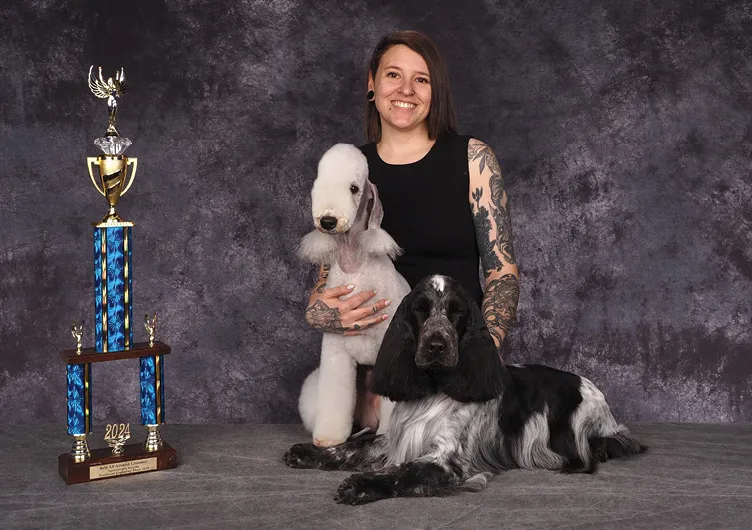
BEST ALL AROUND
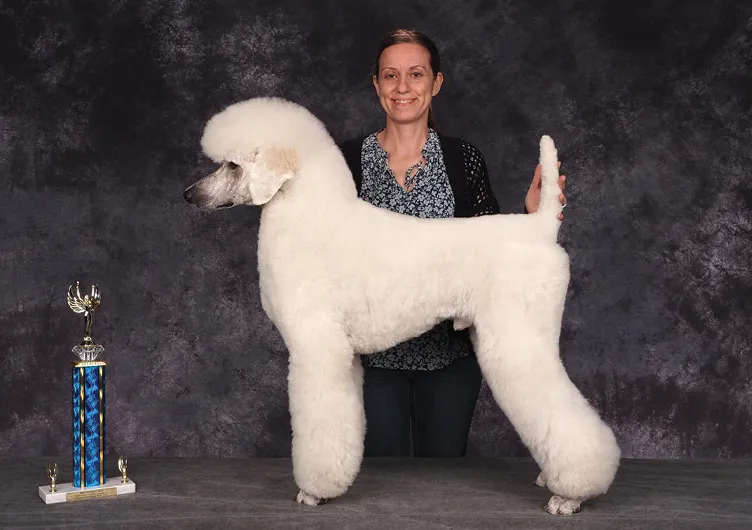
BEST FIRST TIMER

1st Entry
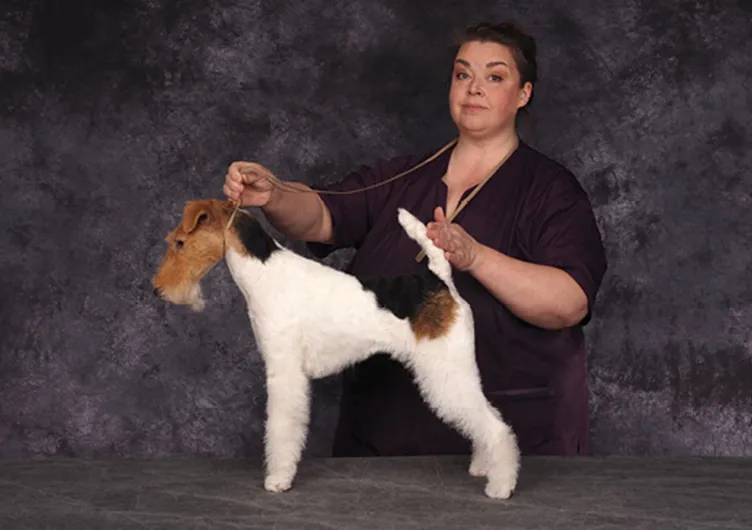
1st Intermediate
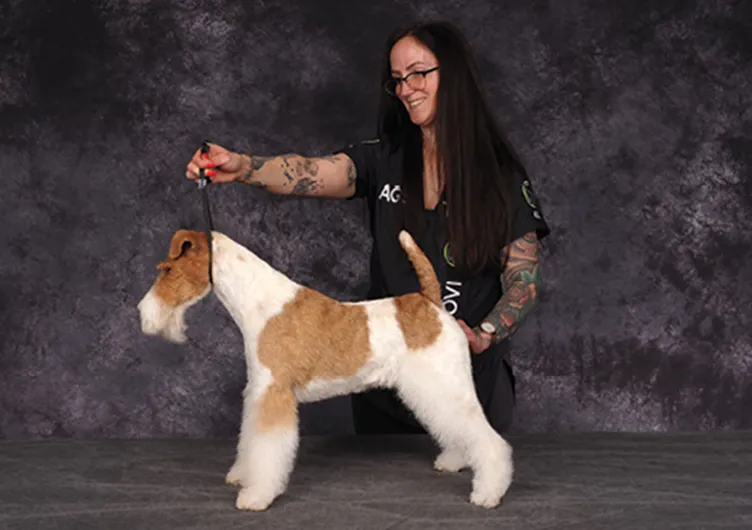
1st Open
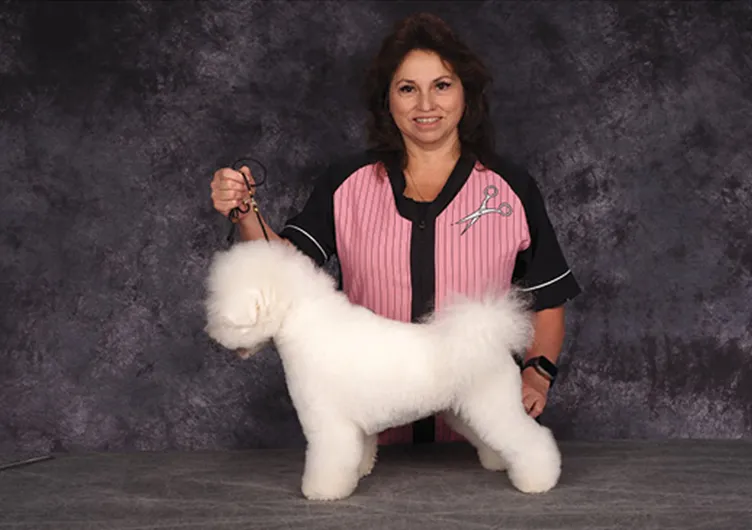
1st Entry

1st Intermediate

1st Open

1st Entry

1st Intermediate
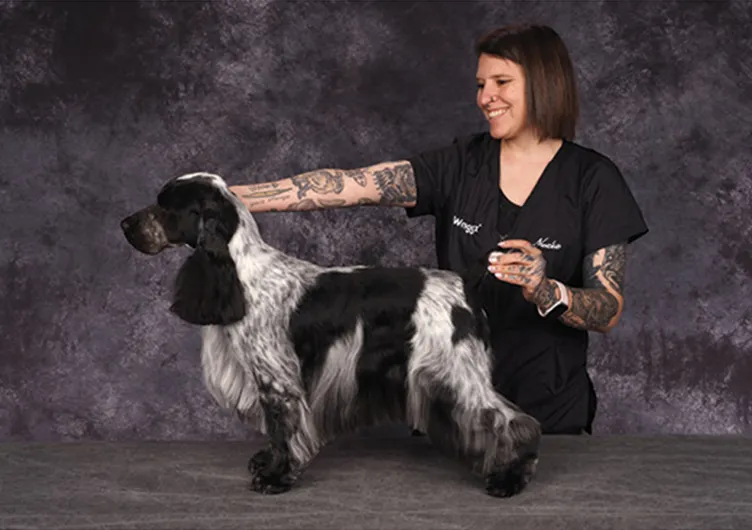
1st Open
CLEANER CO.
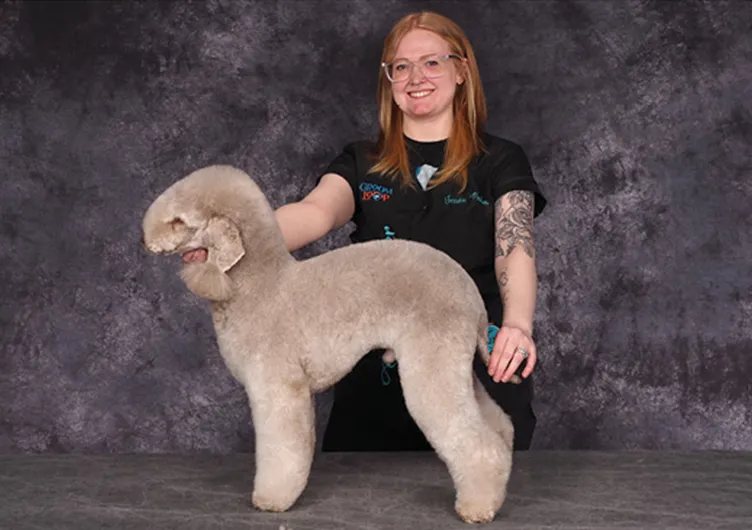
1st Entry
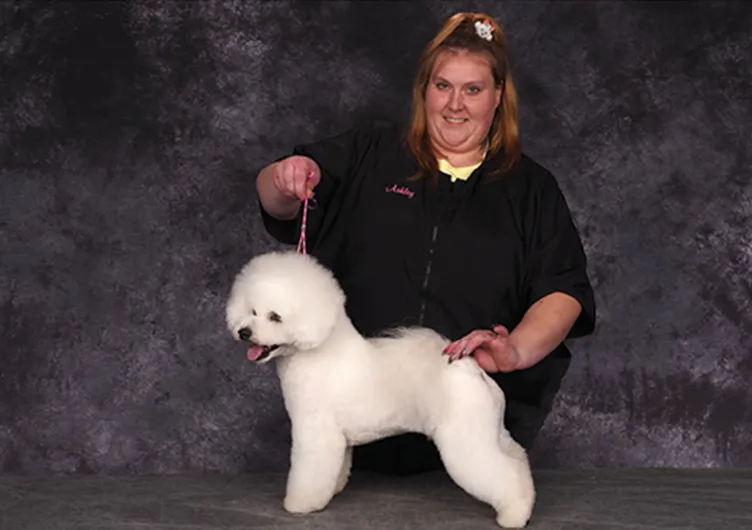
1st Intermediate
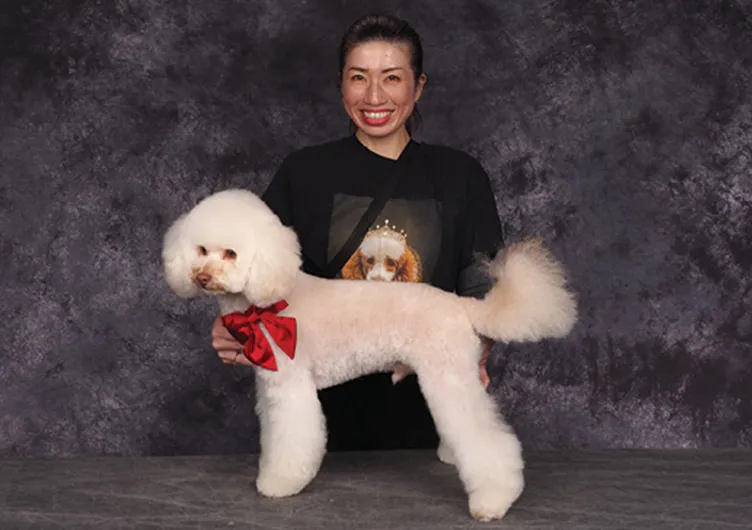
1st Open
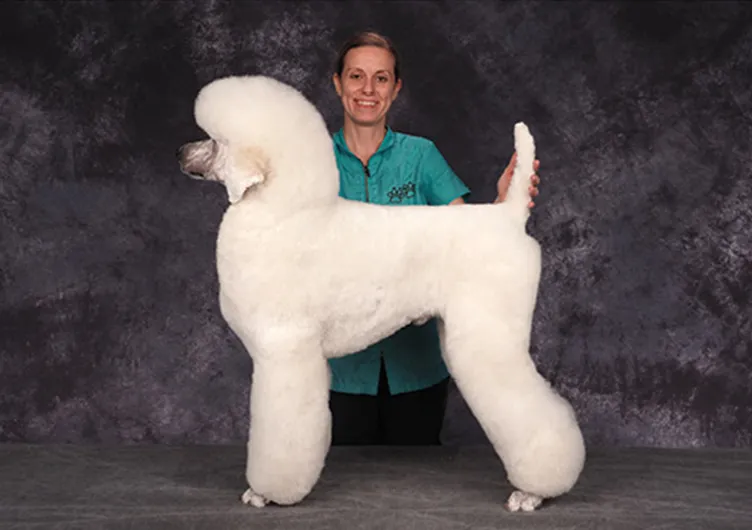
1st Entry
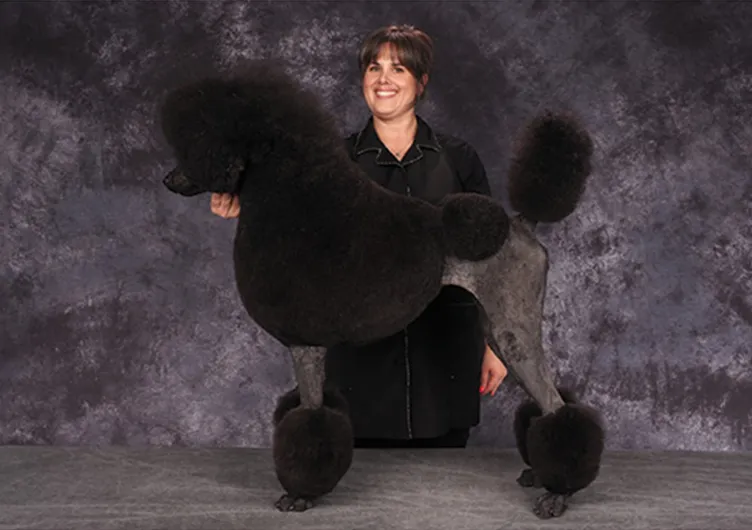
1st Intermediate

1st Open
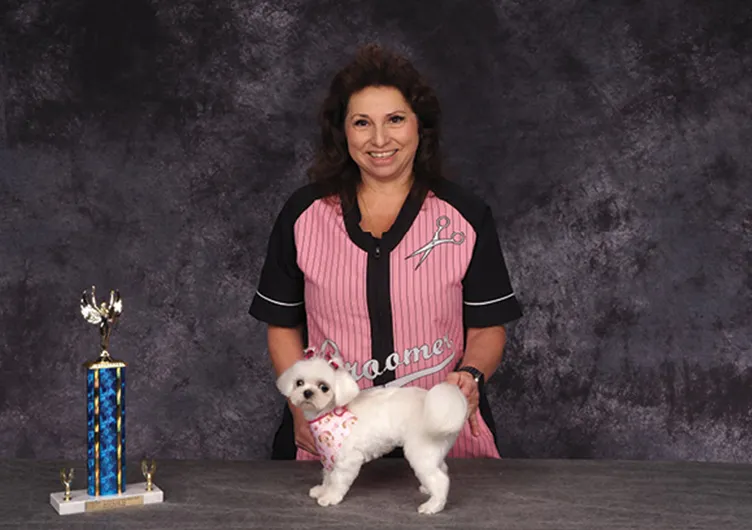
3rd Place

2nd Place
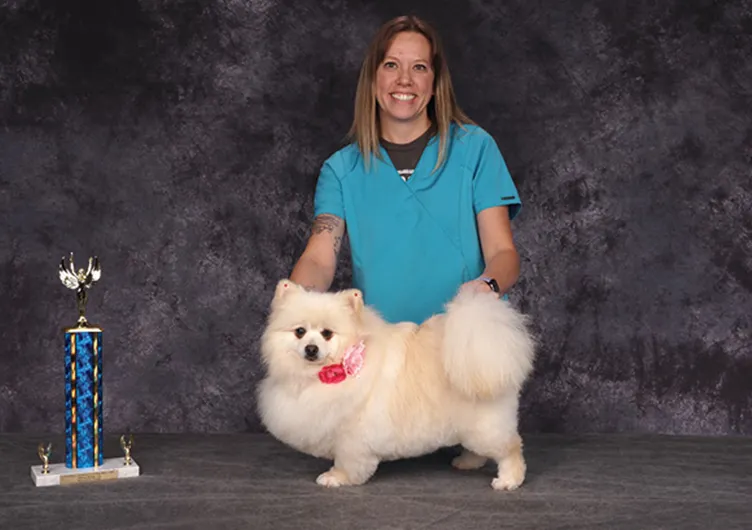
1st Place
Special FX
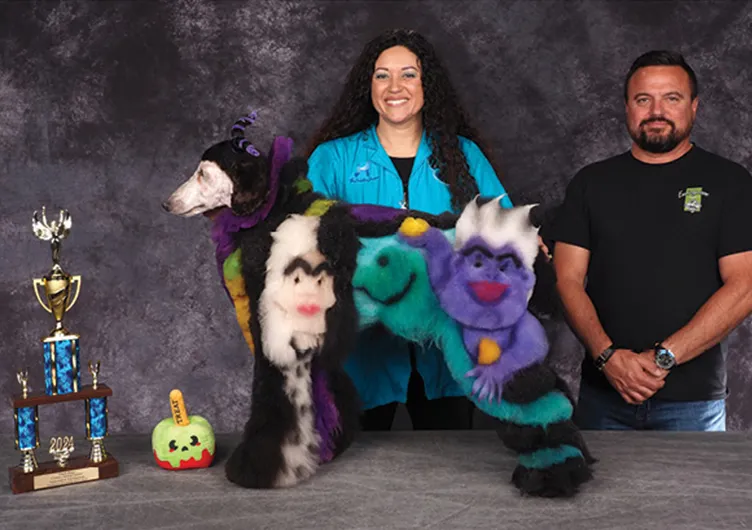
3rd Place

2nd Place

1st Place


Alyssa Kasiba
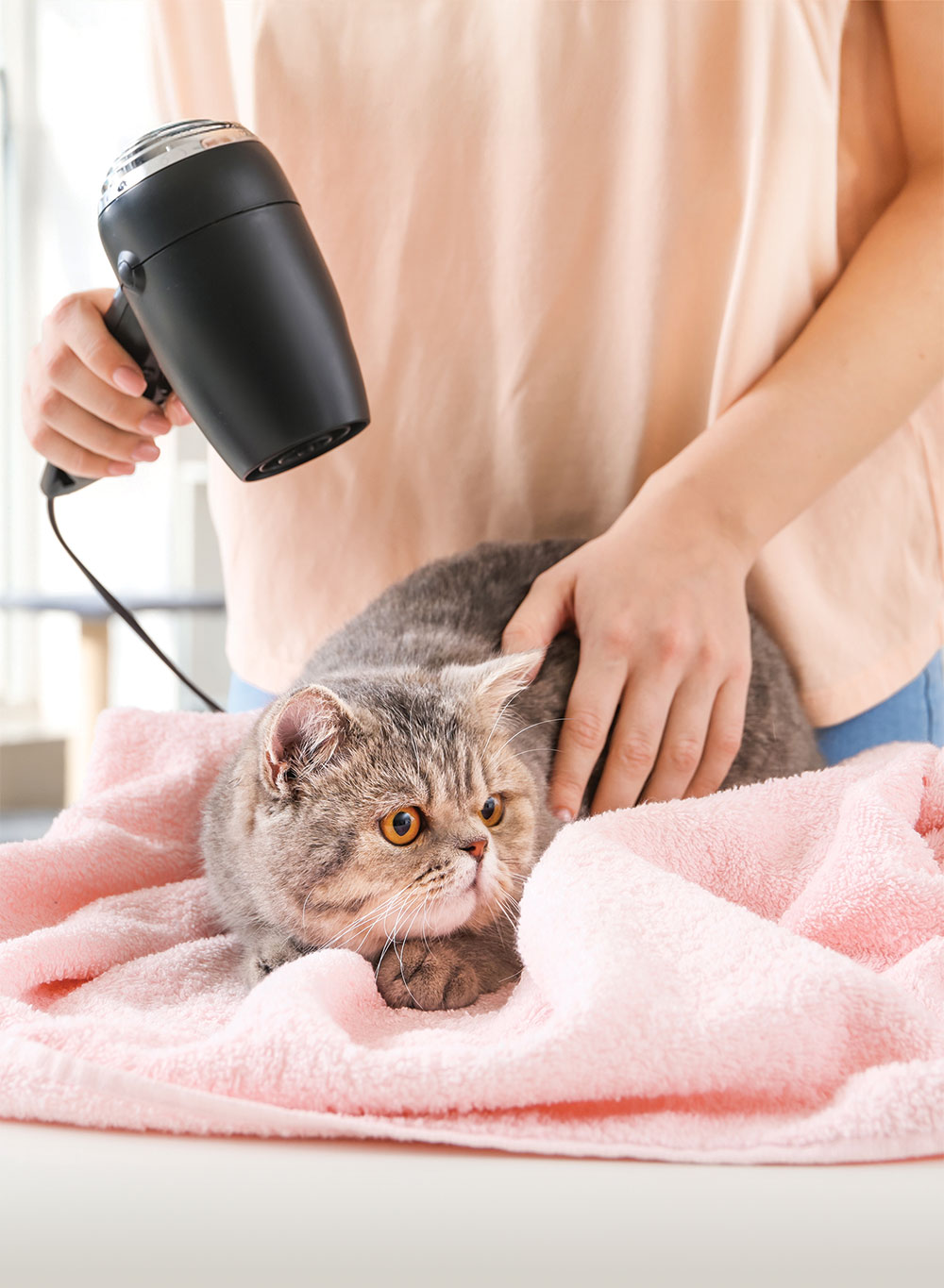
 ust like in dogs, it is important to avoid sending cats home wet or damp after grooming. However, unlike dogs, the drying process usually isn’t as straightforward and can easily lead to overwhelmed and stressed-out cats.
ust like in dogs, it is important to avoid sending cats home wet or damp after grooming. However, unlike dogs, the drying process usually isn’t as straightforward and can easily lead to overwhelmed and stressed-out cats.
In this article, we’ll explore the various drying methods, how to select the appropriate drying methods for each cat, and discuss strategies to make blow-drying a low-stress experience for cats and improve the quality of the finished groom.
Should We Blow-Dry Cats?
Time is an important factor to consider when grooming cats. Many cats have a “turkey timer,” meaning they will run out of patience, thus ending the groom on their own terms. Because of this, we have to be efficient when choosing which techniques and services are the best fit for each cat.
A quiet, low-powered dryer may be easier to introduce to some cats, but it can take substantially longer to fully dry a long or thick coat, making it a poor choice to do the bulk of the drying. A combination of methods is often the best to balance noise level, cat tolerance and time needed to thoroughly dry all the way to the skin.
HV Blow-Dryer
However, using a lower-powered dryer means it will take a good bit longer to fully dry the cat compared to an HV dryer, and will require brushing or combing to fully remove the excess dead hair and any minor mats. Some cats may not tolerate the additional brushing or the additional time needed with this style of dryer, so it is best to use these for final fluff-drying or limited-area finish-drying like heads and tails.
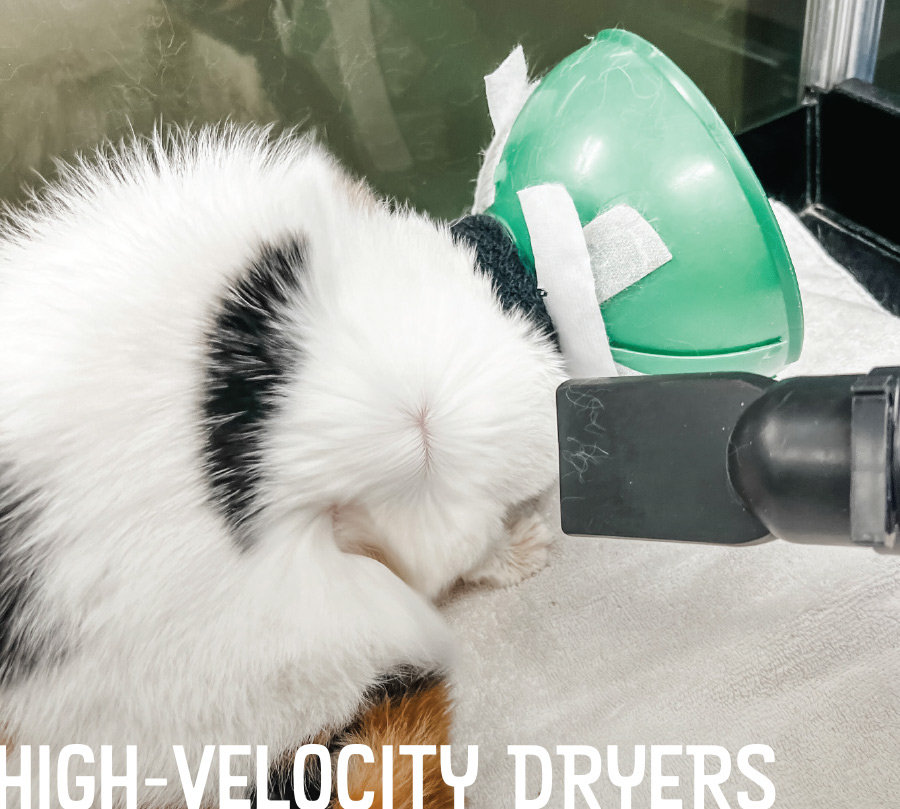
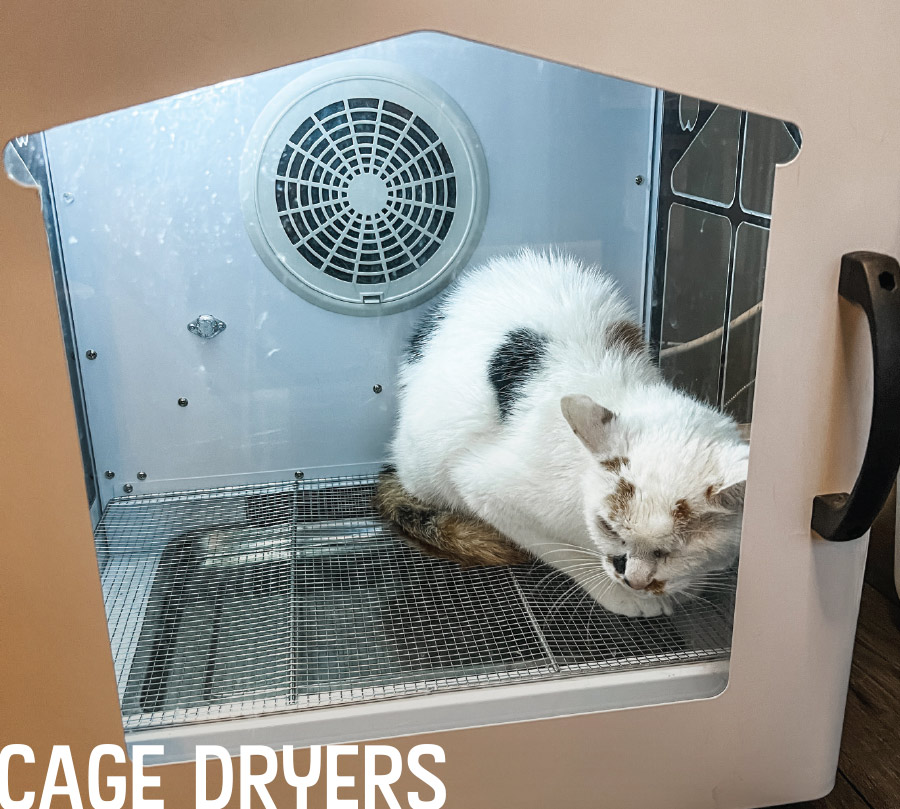
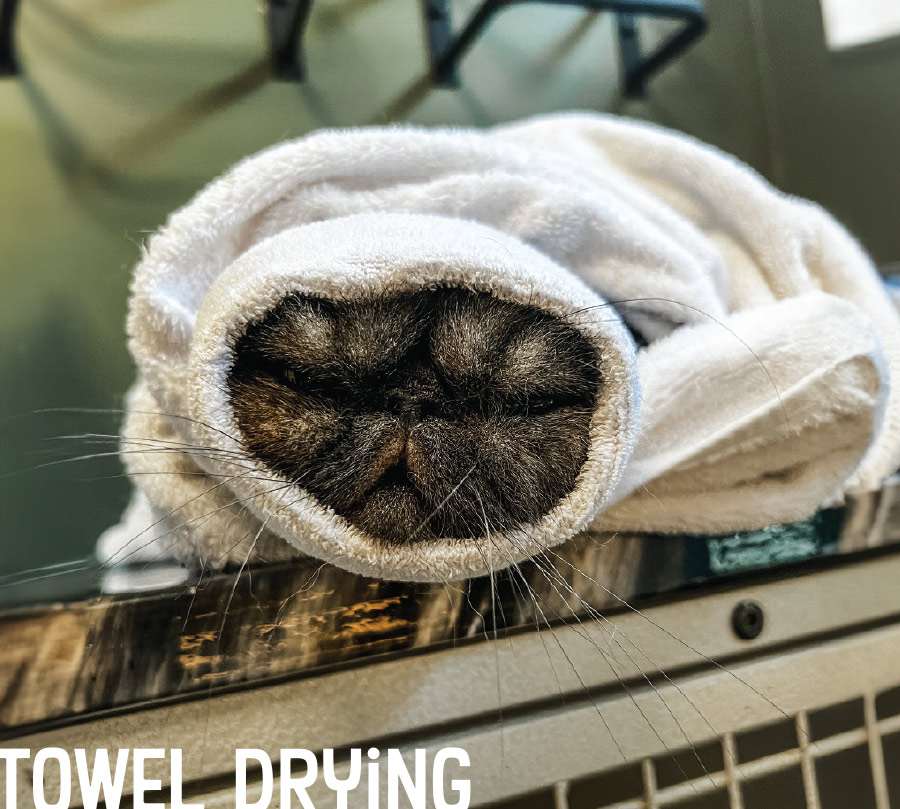
- Start Young. If possible, introduce kittens to blow-drying and grooming early. Younger cats adapt more quickly to new experiences, including the sounds and sensations associated with blow-drying.
- Control a Calm Environment. Before you start, ensure the grooming area is quiet and free from other stressors. Limit interruptions and uncontrolled loud noises like dogs barking, doors slamming shut, phones ringing, etc.
- Use Head/Ear Coverings. Part of introducing new, louder noises can be muffling those sounds to make some cats feel safer. A small towel, Happy Hoodie, or even an e-collar or muzzle can prevent air from blowing directly into their ears or face. Even sweet, compliant cats may benefit from one of these options in order to keep them happy while drying the majority of the body, legs, chest, belly and tail. Then only around the head and face are done without the additional muffling.
- Practice Desensitization. Before using the dryer on the cat, let it get used to the sound. Turn the dryer on a few feet away from the cat, allowing it to observe and listen from a safe distance. Gradually bring it closer, making sure to adjust based on the cat’s reactions.
- Mind the Temperature. Always use a low heat setting to avoid overheating or burning the cat’s skin. The sensation should be warm and soothing, not hot.
- Start on the Sides. I’ve found the most success in starting the drying process on the cat’s sides around the ribcage. This is far enough from the head and face to not freak them out, but also not close to the rear end, which can stimulate them to pee. Hold the HV nozzle close to the skin and work in small circles; not in jerky or fast movements.
- Work on Legs and Underside Early On. If a cat is going to lose patience during the blow-drying, the last thing you want to be working on are the areas that are more difficult to get to, like the legs and belly. Instead, follow the cat as they walk or shift around so that you can focus on the inner legs and belly as much as you can early on in blow-drying. You’ll most likely need to go back to those areas if the cat doesn’t want to be handled or moved to reach them.
Occasionally, I won’t use the HV dryer around their head and face, instead letting them sit under a low fan for the last 10-15 minutes of drying in a cage dryer to finish around those areas, making sure to comb those areas a few times so the hair doesn’t clump together. Over several grooms, a cat can better be introduced to different drying methods and you’ll be able to finish around the head and face without causing too much stress.
For the legs and underside, I will either roll them gently onto their sides or lift up under their armpits or belly while the cat stands. I make sure the cat’s bodyweight is supported by their legs, which prevents the cat from lifting and tucking their legs so I am better able to blow-dry the crooks of those areas more thoroughly. Gently lifting one leg also lets me reach underneath to dry the inside of the opposite leg.
The flat or water-peeler-style nozzles are my favorite for cat legs and paws. I only use them on longer hair while holding the dryer a bit further from the skin so as not to whip the long hair around. Short, dense hair will take a surprising amount of time to dry, so do not neglect to get those areas dry all the way to the skin.
By incorporating these techniques and tips into your grooming routine, you can ensure that the blow-drying experience is safe and comfortable for both you and your feline clients.

 leaning a well-behaved dog’s ears can be a simple task with a little bit of practice; however, for many pet owners, it can still be a challenge to maintain their dog’s ear health between grooming appointments. Without a professional setup, dogs might move around or run away from the owner during ear cleaning. In addition to trying to settle a wiggly dog, not everyone feels comfortable with the task.
leaning a well-behaved dog’s ears can be a simple task with a little bit of practice; however, for many pet owners, it can still be a challenge to maintain their dog’s ear health between grooming appointments. Without a professional setup, dogs might move around or run away from the owner during ear cleaning. In addition to trying to settle a wiggly dog, not everyone feels comfortable with the task.
As a groomer, clients will often seek your advice on how to clean their dog’s ears at home. Questions about how frequently to clean their dog’s ears and which techniques to use are common. By preparing yourself to address these common questions, you can confidently advise your clients on ear cleaning. Groomers can also suggest that owners consult their veterinarian about the frequency of ear cleaning and specific products.
Many dogs will need ear cleaning between grooming visits because they don’t come to the salon frequently enough for ear maintenance, or are prone to dirty ears. All dogs should have their ears checked regularly at home and cleaned as needed to maintain ear health. Factors such as ear type, lifestyle and diet influence how often a dog needs ear cleaning. For many breeds, ear cleaning between grooming appointments is necessary.
For clients who struggle with the task at home, when asked what challenges they have, two main ones are revealed. Firstly, the dog may be too difficult to handle. The dog’s behavior complicates the cleaning process, turning a simple task into a stressful one for the owner. Secondly, many owners fear hurting their dog. Once they have an understanding of the techniques and the anatomy of their dog’s ears, owners will usually gain confidence in ear cleaning if the dog is cooperative.
All dogs should have their ears checked regularly at home and cleaned as needed to maintain ear health.
To provide ear cleaning tips for even the busiest owners, start by encouraging clients to simply check their dog’s ears regularly. Being able to look in the ears while the dog is still is a crucial first step. Some dogs may move away, so training them to stay can be helpful.
Practicing “stay” on a designated grooming station at home, such as a towel or raised bed, helps the dog understand what is expected. This step is a prerequisite for at-home grooming. Duration is then gradually increased as the dog is reinforced for remaining on the home-grooming station.
Another useful exercise is teaching the dog to rest their chin in the owner’s hand through target training. This way the dog learns to stay with minimal holding. The target can then be transferred to an object such as a folded towel so that the owner has both hands free to handle the ears.
While you don’t have to try to answer every question, being prepared to address common concerns or refer clients to other professionals when needed fosters loyalty and trust with your clients.
While most dogs adapt quickly to this routine, those with a history of painful ear conditions may need a more personalized approach to overcome negative associations with ear cleaning, even after their ears are healthy again.
As owners become more comfortable with regular ear checks, cleaning becomes easier, too. Using room-temperature ear cleaner as intended ensures a comfortable experience for the dog. With consistent practice, ear cleaning becomes a simple and stress-free task for both owner and dog. Preventing ear infections is going to save the dog a lot of possible discomfort.
Encouraging clients to take an active role in their dog’s care and providing tips demonstrates your commitment to their pet’s wellbeing. While you don’t have to try to answer every question, being prepared to address common concerns or refer clients to other professionals when needed fosters loyalty and trust with your clients.

 ure, “no” is a complete sentence. I can’t just say “no” to a client, though. Well…I could, but why would I want to? Tactful communication does not have to be rude or passive; tactful communication can have boundaries. Just saying “no” is flat-out unprofessional, in my opinion of course. Old clients, new clients, potential clients, former clients, ALL clients are due the same level of clear-headed, unemotional, straight-to-the-point, slightly personal, tactful responses.
ure, “no” is a complete sentence. I can’t just say “no” to a client, though. Well…I could, but why would I want to? Tactful communication does not have to be rude or passive; tactful communication can have boundaries. Just saying “no” is flat-out unprofessional, in my opinion of course. Old clients, new clients, potential clients, former clients, ALL clients are due the same level of clear-headed, unemotional, straight-to-the-point, slightly personal, tactful responses.
Sure, you can loosen up with long-time clients; however, be aware that it could backfire at some point. After all, this is a business and you are a professional. Clients are not friends, no matter how much we want them to be or treat them as such. Never apologize for setting clear boundaries and enforcing policies or procedures. Remember, the only people who get upset when you set boundaries are those who benefitted from you not having any.
If you struggle with explanations like I do, then this article is for you! I will walk you through some common client questions and ways to respond, as well as an example of firing a client.

Client: I want to make an appointment, are you accepting new clients?
 Hello. Thank you so much for your inquiry;* however, we are not currently accepting new clients. I can add you to the waitlist if you would like.** We have also been referring new inquiries to Salon XYZ.*** Have a great rest of your week!
Hello. Thank you so much for your inquiry;* however, we are not currently accepting new clients. I can add you to the waitlist if you would like.** We have also been referring new inquiries to Salon XYZ.*** Have a great rest of your week!
Client: Can we stay and watch Buddy be groomed?

Unfortunately we do not allow pet owners in the back of our salon while we are grooming.* You are welcome to stay in the lobby, but if Buddy sees you and gets too excited, we may have to forfeit services for safety.** It would be best if you came back at his scheduled pick-up time, or you’re welcome to wait outside and we can give you a call when he’s finished.*** Which would you like to do?****
If a client is persistent or non-negotiable, then just forfeit the services and fire the client. Life is too short to argue over the safety of an animal. Keep in mind, YOU are the professional and your recommendations go above what a client wants. They aren’t always aware of what’s best. Communicate with confidence and the client will instantly feel more comfortable with your suggestions.

Client: I know I’ve missed a couple appointments but Buddy really needs groomed today. Can I bring him in?

Hello. We do not have any availability today.* Due to Buddy missing several appointments,** we are going to have to require a deposit that will go towards his next appointment in order to get him on our schedule. This deposit is non-refundable, so you will be charged if he misses his next appointment.*** The next available dates are____, ____, ____.**** Will any of these work for Buddy? The total due today to book Buddy’s appointment will be $X.XX. Should we charge the card we have on file for you?***** And would you like the receipt texted or emailed?******
I prefer to fire clients via text. Not only does it keep a record of communication, but it also allows time for tactful responses. You never want to send an emotional-filled response. Taking the time to write out a professional response is important. Here’s an example of a text I would send to let a client go:

Hello, this is Jane with My Dog’s Salon. I am writing to you today to let you know I am removing Buddy from my schedule. After some recent reflection on our last conversation/visit/exchange, I have decided that going forward it would be best for Buddy to see another groomer. I can recommend Salon XYZ.* They should be able to accommodate Buddy.** I hope you have a great rest of your week, please give Buddy a big hug from me! Take care.***
Always remember that you do not owe a client any explanation; however, you do owe it to your business to conduct yourself in a professional manner at all times. You could be firing a client because they are aggressive (pet or owner), excessively tardy, never show up, too picky, bad attitude, price haggling, etc.—whatever the reason is, it’s a valid reason.
The number-one way to fight groomer burnout is to remove clients and their pets from your schedule who cause you any grief. If you see a name on your schedule and you dread coming to work that day because of them, then they don’t need to be your client anymore. Saying “no” (in a professional, polite way) will rejuvenate your passion for grooming and make your days more enjoyable.



![]() he Afghan Hound is the super model of dogs. And while you probably won’t see them cross your grooming table all that often, things like foot bevels, carding undercoat and plucking faces are all good practices to perfect your pooch-primping abilities. If you do have the opportunity to work on an Afghan, take it slow, as they are a very sensitive breed.
he Afghan Hound is the super model of dogs. And while you probably won’t see them cross your grooming table all that often, things like foot bevels, carding undercoat and plucking faces are all good practices to perfect your pooch-primping abilities. If you do have the opportunity to work on an Afghan, take it slow, as they are a very sensitive breed.

Hand-stripping (plucking) is the hair-removing technique that targets top-coat hair and in the process will remove undercoat hair as well.
Carding (mucking out) is the hair-removing technique that targets undercoat hair and in the process will remove top-coat hair as well.
Fig 3) Keep plucking back to the corner of the ear where you will begin your clipper work in the next step. Depending on the dog’s temperament and coat color, you might clip that line from the corner of the eye to the corner of the ear or pluck it.









Photo by Anjie Coates
 ean the Angora rabbit is a salon favorite and has gotten the nickname “Best Bunny Bean,” and every time you say it, he smiles.
ean the Angora rabbit is a salon favorite and has gotten the nickname “Best Bunny Bean,” and every time you say it, he smiles. “Where’s the Best Bunny Bean?!” I ask enthusiastically as I open the hay-filled crate.
“Where’s the Best Bunny Bean?!” I ask enthusiastically as I open the hay-filled crate.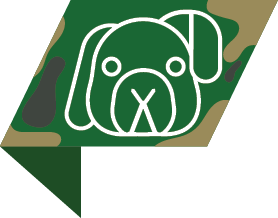 Bean: “Here!” as he springs out onto the table and eagerly presses his face into my assistant Angie’s hands.
Bean: “Here!” as he springs out onto the table and eagerly presses his face into my assistant Angie’s hands. Bean: “I get all the pets first!”
Bean: “I get all the pets first!” “Of course. You are the best bunny,” I assure him.
“Of course. You are the best bunny,” I assure him. Bean: “I know,” as he sploots, which is the pose a rabbit takes on when they are the happiest, and looks like a rabbit starfish.
Bean: “I know,” as he sploots, which is the pose a rabbit takes on when they are the happiest, and looks like a rabbit starfish. I comb through him while Angie massages his head and ears, and he kisses her.
I comb through him while Angie massages his head and ears, and he kisses her. “Any hay bits up there?” I ask Angie, knowing a tiny bit of hay is always stuck in his chin from the ride to the salon.
“Any hay bits up there?” I ask Angie, knowing a tiny bit of hay is always stuck in his chin from the ride to the salon. She nods, then gently plucks it from his face and throws it in the trash.
She nods, then gently plucks it from his face and throws it in the trash. Bean: “I was saving that! You didn’t even eat it—you just threw it away!” as he hops out of his sploot position and looks at me to see if I also took offense.
Bean: “I was saving that! You didn’t even eat it—you just threw it away!” as he hops out of his sploot position and looks at me to see if I also took offense. “I know, Bean, but you’re going to get your picture taken, and you want to look your best,” I say as I gently massage behind his ears.
“I know, Bean, but you’re going to get your picture taken, and you want to look your best,” I say as I gently massage behind his ears.
 Bean sighs, but in moments, all is forgiven, and he returns to his rabbit-starfish position.
Bean sighs, but in moments, all is forgiven, and he returns to his rabbit-starfish position. Angie plucks his maxillary area while I give him his scissor trim.
Angie plucks his maxillary area while I give him his scissor trim. “Gotta clip your nails now, buddy,” I tell him.
“Gotta clip your nails now, buddy,” I tell him. Bean: “OK, but I’m going to need lots more pets.”
Bean: “OK, but I’m going to need lots more pets.” “I know,” I say in agreement as Angie massages his head and ears, and with only a sideways glance, his nails are clipped and hand-filed.
“I know,” I say in agreement as Angie massages his head and ears, and with only a sideways glance, his nails are clipped and hand-filed. Bean: “Chin pets! I need chin pets!” as he bounces his head against Angie’s chin.
Bean: “Chin pets! I need chin pets!” as he bounces his head against Angie’s chin. As always, she complies by petting him with her chin while she holds him against her chest.
As always, she complies by petting him with her chin while she holds him against her chest. “So, Best Bunny Bean, have you decided to keep your scent glands clean?” I ask.
“So, Best Bunny Bean, have you decided to keep your scent glands clean?” I ask. Bean: “I did!”
Bean: “I did!” I look at Angie suspiciously because we both know male rabbits rarely clean both scent glands, if they bother to clean them at all.
I look at Angie suspiciously because we both know male rabbits rarely clean both scent glands, if they bother to clean them at all. “You did! OK, you really are the Best Bunny Bean!” I say with surprise.
“You did! OK, you really are the Best Bunny Bean!” I say with surprise. Next I trim up his face while Angie holds his whiskers out of the way from behind him.
Next I trim up his face while Angie holds his whiskers out of the way from behind him. “OK, sir, you’re all set; now it’s time for your favorite part: pictures!” I say.
“OK, sir, you’re all set; now it’s time for your favorite part: pictures!” I say. Bean hops up my chest and I scoop him up, snuggling him while he tooth-purrs against me as we walk to the picture room.
Bean hops up my chest and I scoop him up, snuggling him while he tooth-purrs against me as we walk to the picture room. I gently place him on the platform and he runs around checking out the camping scene and all the props.
I gently place him on the platform and he runs around checking out the camping scene and all the props.
 Bean: “Oh a tent! I need a tent!”
Bean: “Oh a tent! I need a tent!” Bean hops around inside the tent for a bit and then spreads out in a sploot.
Bean hops around inside the tent for a bit and then spreads out in a sploot. “OK, you need your hat, buddy,” I tell him.
“OK, you need your hat, buddy,” I tell him. Bean hops out of the tent so I can put his hat on, and then investigates the hammock.
Bean hops out of the tent so I can put his hat on, and then investigates the hammock. “You want your picture in the tent or on the hammock?” I ask.
“You want your picture in the tent or on the hammock?” I ask. Bean: “Both!”
Bean: “Both!” I put him back in the tent, and with a bit of awkward positioning on my part, I’m able to get a picture of his face over the lip of the tent.
I put him back in the tent, and with a bit of awkward positioning on my part, I’m able to get a picture of his face over the lip of the tent. “OK, time to get in your hammock, Bean,” I say.
“OK, time to get in your hammock, Bean,” I say. I gently put him in the hammock, trying not to let it swing and startle him. But the moment I let go, he swings it on his own and I stifle a laugh.
I gently put him in the hammock, trying not to let it swing and startle him. But the moment I let go, he swings it on his own and I stifle a laugh. “OK, Bean, you’re all done. It’s time to go home,” I tell him as I take his hat off.
“OK, Bean, you’re all done. It’s time to go home,” I tell him as I take his hat off. Bean: “This is mine now. You said!” as he hooks his feet in the hammock and tries to bring it with him.
Bean: “This is mine now. You said!” as he hooks his feet in the hammock and tries to bring it with him. “Bean, you can’t have the hammock,” I say matter-of-factly. I peel his little feet off the hammock and Angie holds it as he tries to scoop it back into his grasp.
“Bean, you can’t have the hammock,” I say matter-of-factly. I peel his little feet off the hammock and Angie holds it as he tries to scoop it back into his grasp. “Mom will get you your own hammock,” I tell him as I make a mental note to tell his owner where I purchased mine.
“Mom will get you your own hammock,” I tell him as I make a mental note to tell his owner where I purchased mine. Bean: “Promise?”
Bean: “Promise?” I give him a kiss on the top of his head and reply,
I give him a kiss on the top of his head and reply,

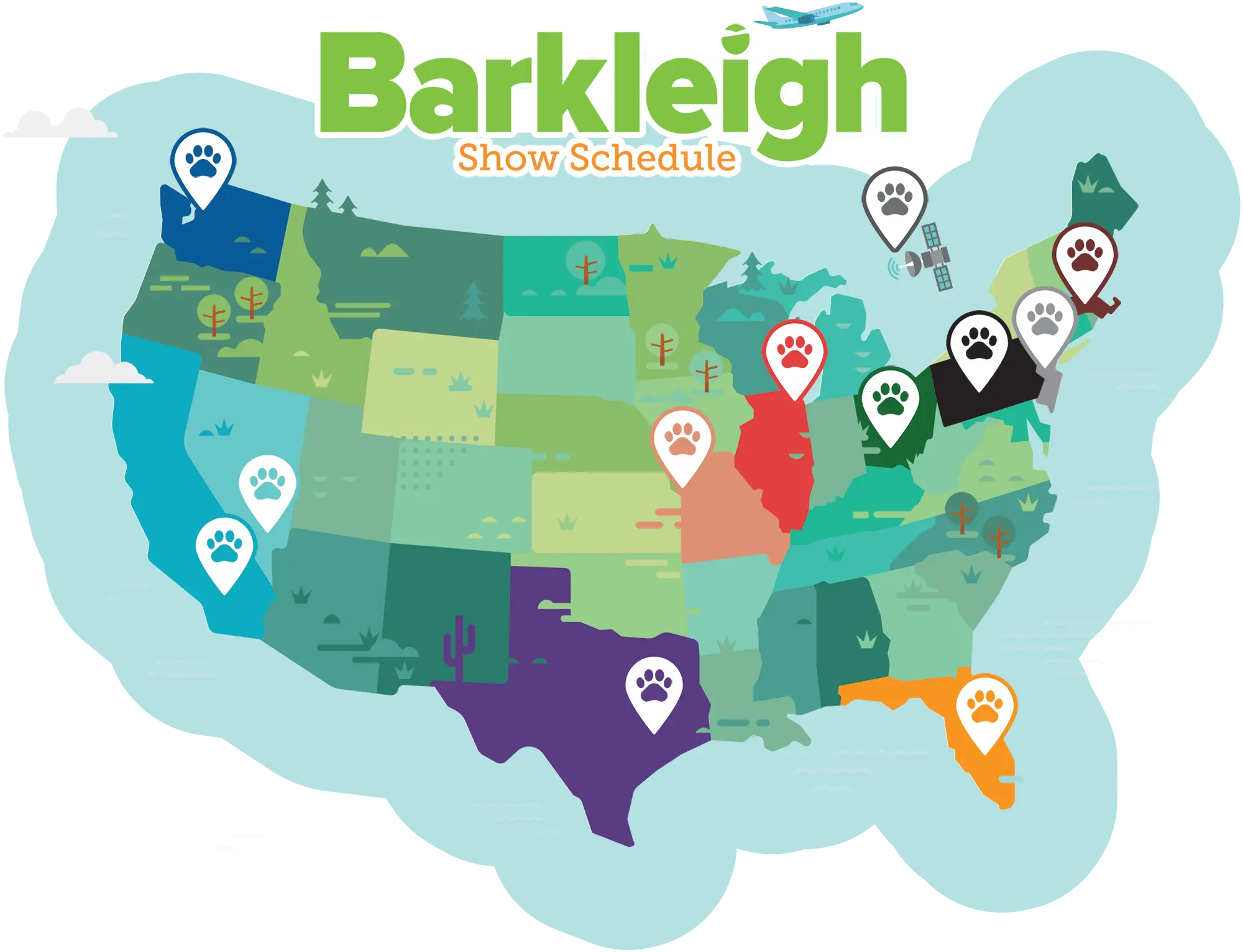

The Tweezerman Pet Collection was developed alongside leading pet industry professionals to create products that keep pets safe, healthy, happy, and looking their very best. Spanning across various categories, Tweezerman aims to fulfill the need to groom furry friends using professional-quality tools certified by experts. The collection includes: 2-In-1 Shampoo-Dispensing Brush, Coated Tip Slicker Brush For Large Pets, Coated Tip Slicker Brush For Small Pets, Precision Curved Grooming Shears 7”, Precision Curved Grooming Shears 9”, Precision Nail Clipper For Large Pets, Precision Nail Clipper For Small Pets, Tick Removal Tweezer, and Safety Tip Trimming Scissors. Available at TweezermanPet.com and Amazon.com

Call (717) 691-3388 ext 224 to place a Classified.
Rates: 25 words or less
$50.00
$2.00 each.
Classified ads must be prepaid.
Call for issue deadlines.
Agency discounts do not apply.




